
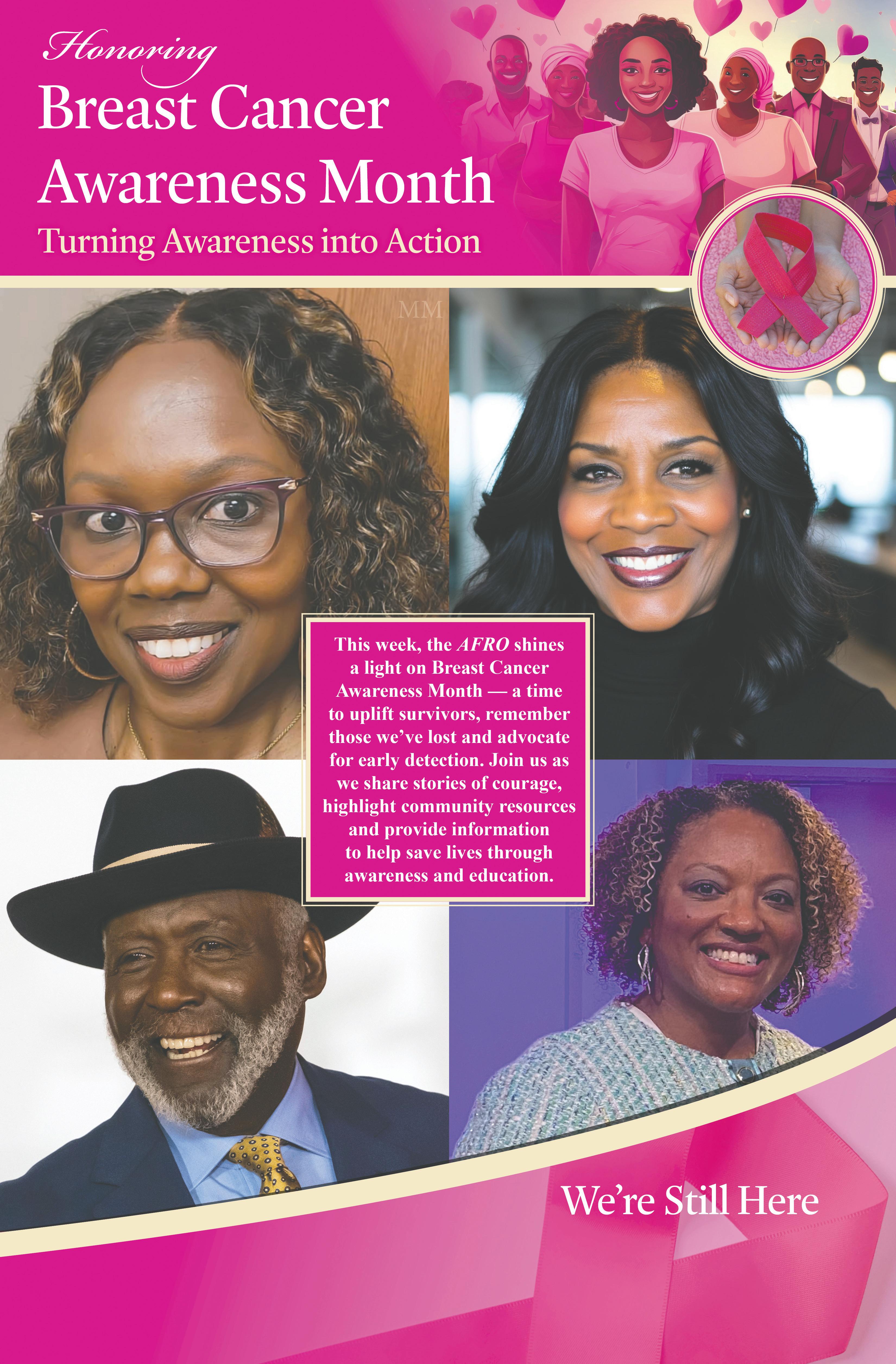







By Victoria Mejicanos AFRO Staff Writer vmejicanos@afro.com
Every October, the world turns pink for breast cancer awareness month to encourage screening, educate about risk factors and symptoms and show support to those affected by the disease. For some, it is a symbol of hope and encouragement, and for others it is a reminder of how their lives have changed forever.
The AFRO spoke with advocates and health professionals to discuss how Black women can better be supported in their journey fighting
breast cancer.
According to the Breast Cancer Research Foundation, despite the likelihood of getting cancer being similar for both races, “there is a persistent mortality gap between Black women and White women.” Black women are also more likely to experience more aggressive forms of cancer such as triple negative breast cancer, according to Dr. Otis Brawley at Johns Hopkins University. For Brawley, the disparities tie into quality of care.
“The death rate for Black women from breast cancer is highly variable around the

country,” said Brawley. He explained that depending on where a breast cancer patient lives, it can impact the quality of care they are able to obtain, especially if they are poor.
“Poor people end up in systems where they tend to get less than optimal care,” said Brawley. He mentioned several instances where his patients missed chemotherapy appointments because of lack of transportation, childcare and other outstanding costs.
“The fact that it costs $15 a day to park in the patient parking lot, actually is a huge hindrance,” said Brawley. “They have insurance that will pay for a $15,000 dose of chemotherapy, but they can’t get it because they can’t afford to pay $15 to park in the parking lot.”
He points to how policy has a role in helping people obtain high quality health care. He explained Massachusetts has a lower death rate than other places in the country, and he pointed to his belief in policies like Romneycare, which was established by Mitt Romney in the late 1990s in the area. Romneycare became the inspiration for the Affordable Care Act, which has helped 45 million Americans.
“It’s absolutely amazing. If you give people high quality health care, they start not dying. It’s that simple,” said Brawley.
His belief that policy can impact how many women live or die from breast cancer is echoed in the experiences of women like Ronda Brunson, a breast cancer survivor turned advocate.
Brunson was diagnosed after her first mammogram when she turned 40. She had no family history of breast cancer and no health insurance at the time of her diagnosis, paying for treatment out of pocket.
With her organization Tata Tuesdays, Brunson connects women with similar diagnoses to each other so that they can learn about treatment options as well as educate and advocate for each other. She and other advocates in her organization have undergone training and go with women to their doctors appointments

as needed.
Her work came out of seeing how different women with the same type of cancer were being treated, in the same state and sometimes even in the same hospital. “We can’t have a uniform outcome if your doctor is sabotaging your results,” said Brunson.
“Because without that level of communication, we probably will die.”
Brunson also challenges what she calls “pink and pretty” culture when it comes to breast cancer awareness
campaigns. She said that often, the funds generated from those campaigns don’t reach women in need, or create tangible change for those facing cancer.
“I don’t want to discredit research. Research is important,” said Brunson. “[But] you want to know where your money is going as it relates to research and how it works… not get caught up in the pink.”
Brunson said when she uses pink, it’s used as a tool for recruitment in her organization.
“Let’s create some real change,” she said. “Let’s
collect real money that can help real women.”
This year Brunson is hosting her very first walk on Oct 4. at Lake Montebello Elementary School in Baltimore. The event will include music, vendors, prayer tents, a memorial garden and more.
“What I want people to do is move,” said Brunson. “I want them to feel activated. I want to help them unlearn everything they thought they knew in the first place, as it relates to breast cancer. I want people to leave changed.”





A survivor’s message to women: ‘Don’t wait, get screened for breast cancer’
By Tashi McQueen AFRO Staff Writer
As Breast Cancer Awareness Month gets underway, advocates stress the importance of regular testing and community education to ensure early detection and empower women to understand their options.
According to the American Cancer Society, breast cancer makes up 34 percent
of all cancers diagnosed in Black women. Black women are 38 percent more likely to die from breast cancer than White women, even though they are 5 percent less likely to be diagnosed with it. In 2022, it was the leading cause of cancer death for Black women.
For those who have faced this daunting journey and survived, these statistics highlight the need for greater awareness in the Black

community and for self-advocacy in the doctor’s office.
“As a Black woman, I’ve learned that sometimes the healthcare system doesn’t ask the deeper questions when it comes to us,” said Valarie Traynham, a breast cancer survivor. “I kept going back to convenient care with the same issues, and each time they treated the infections but never asked why they kept happening.”
Traynham highlighted that the reason behind the disparities Black women face in breast cancer outcomes are due to systemic barriers to care, delayed diagnoses and sometimes not being taken seriously when sharing their symptoms. Generational mistrust in the healthcare system stems from these challenges, further worsening the problem.
Inspired by doctors downplaying her condition, Traynham pushed for answers and eventually discovered that not only did she have myeloma, a cancer of the blood, but breast cancer too.
“When I heard you have breast cancer, it hit me hard,” said Traynham. “I was just coming out of active treatment for myeloma, so this diagnosis felt like a gut punch. I felt like I couldn’t catch a break.”
Although the myeloma

was diagnosed at a more aggressive stage, she caught the breast cancer early, giving her more treatment

options and a greater chance of survival.
According to a study by the Journal of Clinical Oncology (JCO), which analyzed cancer registry data from 8,145 patients diagnosed between 2004 and 2019, the likelihood of a late-stage breast cancer diagnosis increases when a person gets fewer screenings.
Researchers found that, of the women studied, 9 percent of the women who had late-stage breast cancer
19 percent of them received late-stage cancer diagnoses.
“The trend persisted regardless of age, race, and menopausal status,” states authors of the study.
Traynham was lucky to catch her breast cancer before it became a late-stage diagnosis. Still, she says it was tough, with the side effects of chemotherapy for breast cancer being harsher than her treatment for myeloma.
Today, she passes along
“Awareness, vigilance and action can save lives.”
received annual screenings.
The number of late-stage diagnoses increased to 14 percent in women who only received biennial screenings, or screenings between 15 and 27 months. Of the women in the study who were only screened intermittently,
the valuable lessons she picked up in her fight.
“I learned that if something seems off, you shouldn’t wait or brush it off, get it checked,” said Traynham. “Awareness, vigilance and action can save lives.”


By Shernay Williams Word in Black
A simple question sparked complicated answers: “Would you participate in a clinical trial?”
“I would be nervous,” Baltimore resident Kim Pennington admits. “It has to be a sacrifice, and I don’t know if I want to sacrifice my health and my life for a trial.”
She’s not alone. Black women make up just 2 percent of all cancer clinical trial participants. Experts say this lack of participation is one of the reasons Black women are 38 percent more likely to die from breast cancer.
What is a clinical trial?
Clinical trials aren’t experiments on strangers. They’re where new medications or treatments are tested on people who volunteer to participate, allowing researchers to determine if they’re safe and effective. It’s a form of medical research — and they’re often the only way patients can get access to the most advanced treatments.
“Clinical trials are just a marvelous opportunity to get the most cutting-edge therapy that’s available,” explains Georges C. Benjamin, M.D., executive director of the American Public Health Association.
So why are Black women underrepresented? The

Unsplash / Derek Finch
Despite having high breast cancer mortality rates, just 2 percent of cancer clinical trial participants are Black women. Studies show a mix of medical distrust and implicit bias play a role, but fewer Black research participants can mean less research overall to help understand Black women’s high breast cancer mortality rates.
answer lies in a long history of exploitation and exclusion.
A 2023 survey of 257 Black women across the U.S. conducted by TOUCH, The Black Breast Cancer Alliance, found that historical mistreatment of Black bodies in the name of medical research contributes to hesitancy like Pennington’s.
“There is a long history of mistrust in the Black community of the medical
establishment; much of it is well-founded,” says Oliver Brooks, M.D., past president of the National Medical Association.
A history of medical atrocities
Generations of Black folks know about Black men and women who were treated unjustly by the U.S. medical community:
• In the 1840s, the


so-called father of gynecology, J. Marion Sims, perfected surgical techniques still employed today by operating on enslaved women without anesthesia. His statue stood in Central Park until 2018.
Throughout the 20th century, Black men and women were sterilized without consent.
• From 1932 to 1972, the U.S. Public Health Service let hundreds of Black men in Alabama go untreated for syphilis under false pretenses. They were told they were being treated for “bad blood,” but researchers were purposely withholding treatment so they could
racism, or whatever you want to call it, we’re not invited,” she says.
“I know I wasn’t asked,” adds Latoya Bolds-Johnson, a breast cancer survivor. “I had to push for it.”
Diagnosed at 36, the mother of three says her doctor shrugged off her request to join a clinical trial. “He was very dismissive about it,” Bolds-Johnson says. She had to find another physician willing to enroll her in a study.
“Clinical trials do save lives,” she says.
Fairley knows this firsthand. A breast cancer survivor herself, she credits a clinical trial with saving her life. That’s why she launched the campaign called When We Tri(al).
The initiative features an online platform that enables Black women to complete questionnaires, which are then matched with clinical trials relevant to them and their health needs. Fairley says the effort has helped enroll more than 25,000 Black women into clinical trials.
Why Black women’s participation in cancer trials matter
Fairley says that when more Black women participate in clinical research, it helps scientists better understand how conditions like breast cancer impact them.
“There’s a growing body of science that is validating that a Black breast cancer cell looks totally different from a White breast cancer cell,” Fairley explains. “And guess what the drug [cancer treatments] were made on? The drugs were made on White cells.”


to patients, the next step is for researchers to conduct a clinical trial.
Advancing Black breast cancer research
Part one of this series explored how Black breast cancer research like Sharma’s is under threat because of the Trump administration’s stance on DEI.
For Georges Benjamin, the head of the American Public Health Association, the stakes couldn’t be higher.
“We will push back,” he says. “In the end, we will win. But if you don’t do these things with intention, they won’t happen.”
That intention, he says, starts with trust. Researchers must also reconsider their approach to working with members of the Black community if they want to advance medical research.
“To go into research for a clinical trial, you have to have a lot of trust that the doctors aren’t, quote-unquote, experimenting on you,” he says. “Well, guess what? They actually are.”
That is why, he argues, effective medical research requires cultural sensitivity and relationship building, including with trusted Black physicians and pharmacists who can relay clinical trial information to their patients.
Earning Black women’s trust
Columbia University professor Adana Llanos Wilson, Ph.D, an epidemiologist who’s conducted dozens of studies around Black women and breast cancer, agrees. She says the issue isn’t getting more Black women to participate in research;
“When we build authentic relationships with communities, when our research teams reflect the populations we aim to serve, and when we show up with respect and transparency – Black women show up too.”
A research team at the Johns Hopkins University School of Medicine announced similar findings. Dipali Sharma, Ph.D., and her team discovered that breast cancer cells from Black women multiply at faster rates and are more likely to spread to other organs than cells from White women.
Over the last several years, she and her team have been comparing breast tissue donated with consent by Black and White women who were diagnosed with triple-negative breast cancer (TNBC), one of the most aggressive types. Black women are disproportionately affected by this variant of the disease.
“Why [are] younger African American women getting TNBC, and why when they get TNBC, is it so aggressive?” Sharma asks. “That was our goal, to understand that.”
But the biggest reason they don’t participate in clinical trials is recruitment—or the lack thereof.
“Whether it’s illicit bias,
The Johns Hopkins team is now testing a treatment option shown to slow these aggressive cancer cells among Black women. However, before it becomes available
it’s the medical community’s failure to earn their trust in the first place.
“When we build authentic relationships with communities, when our research teams reflect the populations we aim to serve, and when we show up with respect and transparency – Black women show up too,” Wilson wrote in an email to Word In Black. For Bolds-Johnson, participating in a clinical trial was a no-brainer.
“I needed my body to be studied,” she explains. “I have three daughters who will develop breasts soon, and whatever I could do to contribute [to] Black research, I needed to do it. I had to do this for my children — my girls.”
This is part two of a multimedia series exploring Black women and breast cancer. It was published with the assistance of the Journalism and Women Symposium (JAWS) Health Journalism Fellowship, supported by the Commonwealth Fund. This article was originally published by Word in Black.

By Megan Sayles AFRO Staff Writer msayles@afro.com
The eighth annual All Boobs Matter community event is set to take place on Oct. 19 outside of Reinvent U Spa and Wellness in Pikesville, Md. Created by Frances Cuesta-Boone, owner of Reinvent U Spa and Wellness, the free gathering honors breast cancer survivors, fighters and their families.
This year, the event will award the Black Breast Cancer Alliance with the first-ever Pink Impact Award, recognizing an organization that has gone beyond the call of duty to help the breast cancer community.
“This event is not just about awareness, it’s truly about creating an uplifting space filled with wellness, educational information, vendors, performances and community support to remind everyone that breast health and overall wellness really matter,” said Cuesta-Boone. “I was very intentional about the name, ‘All Boobs Matter,’ because I wanted to draw attention to the fact that breast health is for everyone. It affects men, women, young people and older adults.”
During the event, attendees will have the opportunity to participate in health evaluations that include breast exams, blood pressure checks and body mass index (BMI) screenings. There will also be performances from Epic Attraction Marching Unit, survivors, spoken word poets, praise dancers and Baltimore comedian Howard G.
One of the survivors being
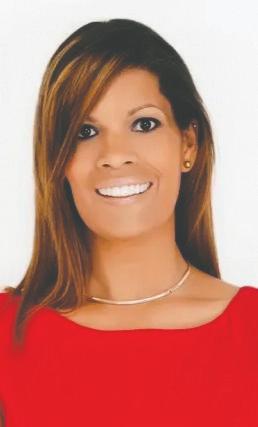
Frances Cuesta-Boone is the owner of Reinvent U Spa and Wellness in Pikesville, Md., and the founder of All Boobs Matter, a community event honoring breast cancer survivors, fighters and their families.
honored at the community event is Sabrina Jones, wife of Baltimore County Councilman Julian E. Jones. Ronda Brunson, survivor and nonprofit leader of Tata Tuesdays, will also be honored with the Voice of Strength award for her work to ensure breast cancer investments go to people who are struggling to afford and access treatment.
For Cuesta-Boone, All Boobs Matter is an effort to build community support for not only the breast cancer community but anyone who is facing life-altering health challenges.
Read more on AFRO.com

By Andrea Stevens
AFRO Staff Writer
astevens@afro.com
October is Breast Cancer Awareness Month, a time dedicated to raising awareness, supporting survivors and promoting early detection. Throughout Maryland, Washington, D.C., and Virginia, local organizations and health providers are offering a variety of free events, including walks, screenings, educational workshops and support gatherings. Take a look below for a list of upcoming opportunities to get involved, learn and show support.
Maryland
Howard County
Breast Cancer AwarenessVictory Walk In Bailey Park there will be a Victory Walk for the survivors or Breast Cancer. Pink clothing is strongly encouraged as Ashley Delise Curates, the event organizer, celebrates her mother being cancer free. All survivors are encouraged to bring their family and friends to celebrate them as well.
Date: 10/4/25
Time: 11:00 a.m. - 1:00 p.m.
Location: Bailey Park
10271 Wincopin Circle
Columbia, MD 21044
Cost: Free Baltimore County
Breast Cancer Health
Discussion
The Charter Senior Living of Woodholme Crossing will host a discussion about Breast Cancer. The event will focus on early detection, treatment options and emotional support with Nurse Natoe Goba.
Date: 10/16/25
Time: 1:30 p.m. - 2:30 p.m.
Location: Charter Senior Living of Woodholme Crossing 1840 Reisterstown Road Pikesville, MD 21208
Cost: Free
Montgomery County
Let’s Beat Breast Cancer Rally @ Olney Farmer’s and Artist Market
Local experts and community advocates will have a breast cancer awareness rally. There will be live music and plant based food options, all in support of breast cancer prevention.
Date: 10/19/25
Time: 12:00 p.m. - 1:00 p.m.
Location: 2801 Olney Sandy Spring Rd
2801 Olney Sandy Spring Road Olney, MD 20832
Cost: Free Washington D.C
D.C. Making Strides Against Breast Cancer Walk
The American Cancer Society is having a breast cancer walk to raise awareness for breast
cancer. All are encouraged to participate in the walk, support the survivors and remember those lost.
Date: 10/18/25
Time: 9:00 p.m. - 12:30 p.m.
Location: 300 Raoul Wallenberg Pl SW
300 Raoul Wallenberg Place Southwest Washington, D.C.
20024
Cost: Free
Breast Cancer Walk
Honoring Survivors
Please join She Still Smiles as they host a Breast Cancer walk in support and solidarity of survivors.
This will be an early morn ing walk in the park to honor the memory of those that have passed on, those that are still fighting and those that have gone through remission.
Date: 10/25/25
Time: 8:00 a.m. - 12:00 p.m.
Location: Anacostia Park, Washington, D.C.
1900 Anacostia Drive Wash ington, D.C. 20020
Cost: Free
Virginia Annual Breast Cancer Awareness Conference
The Virginia Hospital Center is hosting their annual Breast Cancer awareness conference, the keynote speaker will be Dr. Ioana Marcus on “Nurturing
Emotional Resilience: Surviving Breast Cancer and other Trauma.”
Date: 10/16/25
Time: 5:00 p.m. - 8:00 p.m.
Location: VHC Health - Virginia Hospital Center 1701 North George Mason Drive Arlington, VA 22205
Cost: Free
P.I.N.K. Is Our Power: Breast Cancer Solidarity Walk & Luncheon
Date: 10/18/25
This will be the first Breast Cancer community event that the Fairfax Church of Christ has ever hosted. There will be a walk followed by mammogram screenings, educational panel discussions, and a nutritious lunch.

Time: 10:30 a.m. - 2:00 p.m.
Location: Fairfax Church of Christ 3901 Rugby Road Fairfax, VA 22033
Cost: Free







By Tashi McQueen AFRO Staff Writer tmcqueen@afro.com
Breast cancer continues to be a leading cause of death in Black women out of all cancers in the United States. Though there are advancements in treatments, Black women continue to have an approximately 40 percent higher death rate from breast cancer than their White counterparts, according to the Breast Cancer Research Foundation.
Grassroots organizations are helping address this disparity by raising awareness around early detection and providing access to free and low-cost screenings.
“By offering no-cost or low-cost mammograms at familiar venues, these programs remove barriers like transportation and cost, making it easier for uninsured women to get screened,” said Pamela Burnett, founder of the Beautiful Gate Cancer Support and Resource Center and Mammograms After Sunday Service (MASS). “Volunteers and community leaders, often cancer survivors themselves, promote participation and reduce stigma through relatable advocacy.”
Burnett created the MASS Breast Health Education and 3D Mammography Screening Program due to her own

and treatment.
“By partnering with organizations such as the Florida Department of Health and expanding outreach to places of worship and community nonprofits, the MASS Program has been able to reach thousands of women, provide vital breast health education, facilitate mammogram referrals and work to reduce late-stage cancer diagnoses,” said Burnett.
MASS has partnerships with churches, community centers and sororities, which Burnett said are key to improving access to health screenings in underserved areas and ensuring culturally sensitive education and screenings where women feel comfortable.
connect Black women with knowledge about breast cancer.
“We’ve had impactful programs from our breast cancer systems program, which provides financial assistance to any survivor who needs their utilities, rent or mortgage paid,” said Caleen Allen, executive vice president of Sisters Network. “We offer paid for mammograms for women who are uninsured or insured.”
Though Sisters Network is a national movement, it has partners in local communities
as well.
“We have boots on the ground and we’re proud that we not only can help women across the country nationally, but we’re in communities where we live and work every day,” said Allen. “We’re constantly educating people about the process and why it’s important. We’re gonna make sure that all barriers are addressed until every woman has access to the care.”
journey with breast cancer at age 40. The MASS Program, established in 2016, was a direct response to disparities in access to annual health screenings among both insured and underinsured women.
She also founded the Beautiful Gate Cancer Support and Resource Center in 2006 to address limited cancer resources and challenge stigmas around cancer and mental health in the community.
“Before my diagnosis, topics like breast cancer and mammograms were rarely discussed in my family or community due to cultural misconceptions and stigma,”
Burnett said. “This silence, and even misunderstanding from those close to me, made it hard to seek support during my journey. My experience highlighted the urgent need for education, open dialogue and resources for women of color, who often face disparities in healthcare and support.”
Cultural stigma, limited health conversations and misunderstandings about breast cancer can deter screenings and delay diagnosis, said Burnett. Distrust of healthcare or a shortage of culturally competent providers also affects both insured and uninsured patients, leading to gaps in detection
Through their partnerships they provide no-cost or low-cost clinical breast exams, mammograms, Pap tests and follow-up care to eligible women. MASS makes sure outreach is led by volunteers who are survivors or have been personally affected by cancer.
Looking to the future, Burnett said the Beautiful Gate Cancer Support and Resource Center is working to expand outside of Florida, pursuing funding, organizing workshops, joining health fairs and developing coalitions with cancer support.
The Sisters Network is another grassroots organization helping



By Tashi McQueen AFRO Staff Writer tmcqueen@afro.com
Each year thousands of women across the nation are diagnosed with breast cancer. For many, it’s a lonely journey with countless unanswered questions. But for some, a blueprint of survival has been laid by the women in their families who stared down a breast cancer diagnosis and lived to tell their stories.
For Dr. Michelle Taylor, Baltimore City’s newly appointed health commissioner, her breast cancer diagnosis came with help from her mother, Rita Works, who was a survivor herself.
In an interview with the AFRO, the mother-daughter duo shared information on their breast cancer journeys and emphasized how regular testing, awareness of family medical history and education opened up a world of possibilities for them.
“I was just a couple of months past 40 when a routine mammogram showed two spots on my right breast,” said Dr. Michelle Taylor, 49. “Given my age, it was shocking for all of us.”
Taylor is now a survivor, 10 years later.
For her mother, the diagnosis was a bit different.
Works, 69, said she learned of her diagnosis during a trip to the emergency room, where doctors discovered a lump in her breast while running other tests. Works has been on her breast cancer journey for 13 years. Though she and her daughter beat breast
cancer, Works will never forget her twin sister who didn’t make it.
For Works, her late twin sisters’ journey with breast cancer put fear into the members of the family.
Works said, at first, her sister decided to get one breast removed.
“Everything was supposed to go okay,” said Works. “She went into remission for a year and a half, and when it came back it had metastasized.”
Works said at that point, there was no correcting it. Her sister went through chemotherapy, trying to treat the disease, but ultimately it was not effective enough.
“For our family, for a long time breast cancer felt like a death sentence,” said Taylor.
But due to medical advancements and Taylor going through medical training herself, she was diagnosed with breast cancer she understood that there were options. Both Taylor and Works chose double mastectomies instead of chemotherapy, to avoid living year to year in fear of recurrence.
“If you catch it early, it may be minimal,” said Works, to those who may not want to get checked out for fear of the results. “You have choices. The earlier you find it, the more choices you have. You need to just go find out.”
Experts stress that it is especially important for Black women to know their family medical history, stay informed and keep up with regular breast cancer screenings.
“For our family, we understood that
–given our history– it was important to lower our risk of recurrence as much as possible,” said Taylor. “We were always very vigilant about mammograms to make sure that if we had lumps in our breasts we went and got them checked out.”
According to a study from the National Library of Medicine, 5 to 10 percent of diagnosed breast cancer cases are hereditary. Chances of developing breast cancer are increased if a person inherits mutations to certain genes.
According to the National Cancer Institute (NCI), “BRCA1 (BReast CAncer gene 1) and BRCA2 (BReast CAncer gene 2) are genes that produce proteins that help repair damaged DNA. Everyone has two copies of each of these genes—one copy inherited from each parent.”
NCI reports that “people who inherit a harmful change (also called a mutation or pathogenic variant) in one of these genes have increased risks of several cancers—most notably breast and ovarian cancer, but also several other types of cancer.”
Aside from an increased chance of developing cancer, NCI officials say “people who have inherited a harmful change in BRCA1 or BRCA2 also tend to develop cancer at younger ages than people who do not have such a variant.”
According to Johns Hopkins Medicine, someone with a genetic mutation has approximately a 50 percent chance of passing that trait to their children.
The Centers for Disease Control

and Prevention reports that around 3 percent of breast cancers develop due to mutations in BRCA genes.
Around 50 out of 100 women with a mutation in their BRCA genes will get breast cancer by the time they turn 70, compared to just 7 out of 100 women in the general U.S. population.
Taylor said it is key that Black women know they can advocate for themselves in the doctor’s office. If one doctor is not listening–seek another.
“Take someone with you to appointments—you may only hear 25 percent of what the doctor tells you,” said Taylor.
“I was at every one of my mom’s appointments, I was her note taker,” she said. “She was at every one of my appointments, she was my note taker.”
Works shared a word of encouragement for women who have been newly diagnosed with breast cancer.
“Keep your head up, stay positive,
lean on your family and friends, and don’t give up hope,” said Works.
“Even if you don’t have family, you have friends, church members and community groups.”
Taylor echoed this sentiment.
“The main thing is not to sit at home and be by yourself and wallow-in-worry,” said Taylor. “Always know there’s hope and people willing to assist you.”
Taylor, in her new role, said she will continue the work of the Baltimore City Health Department to ensure women throughout the city have the breast cancer resources they need, and make every effort to be a hands-on commissioner.
“Look to see me in your neighborhood,” Taylor told the AFRO. “We will be bringing every resource that the health department has to a community near you, to make sure that you know everything that we offer and that our partners offer.”

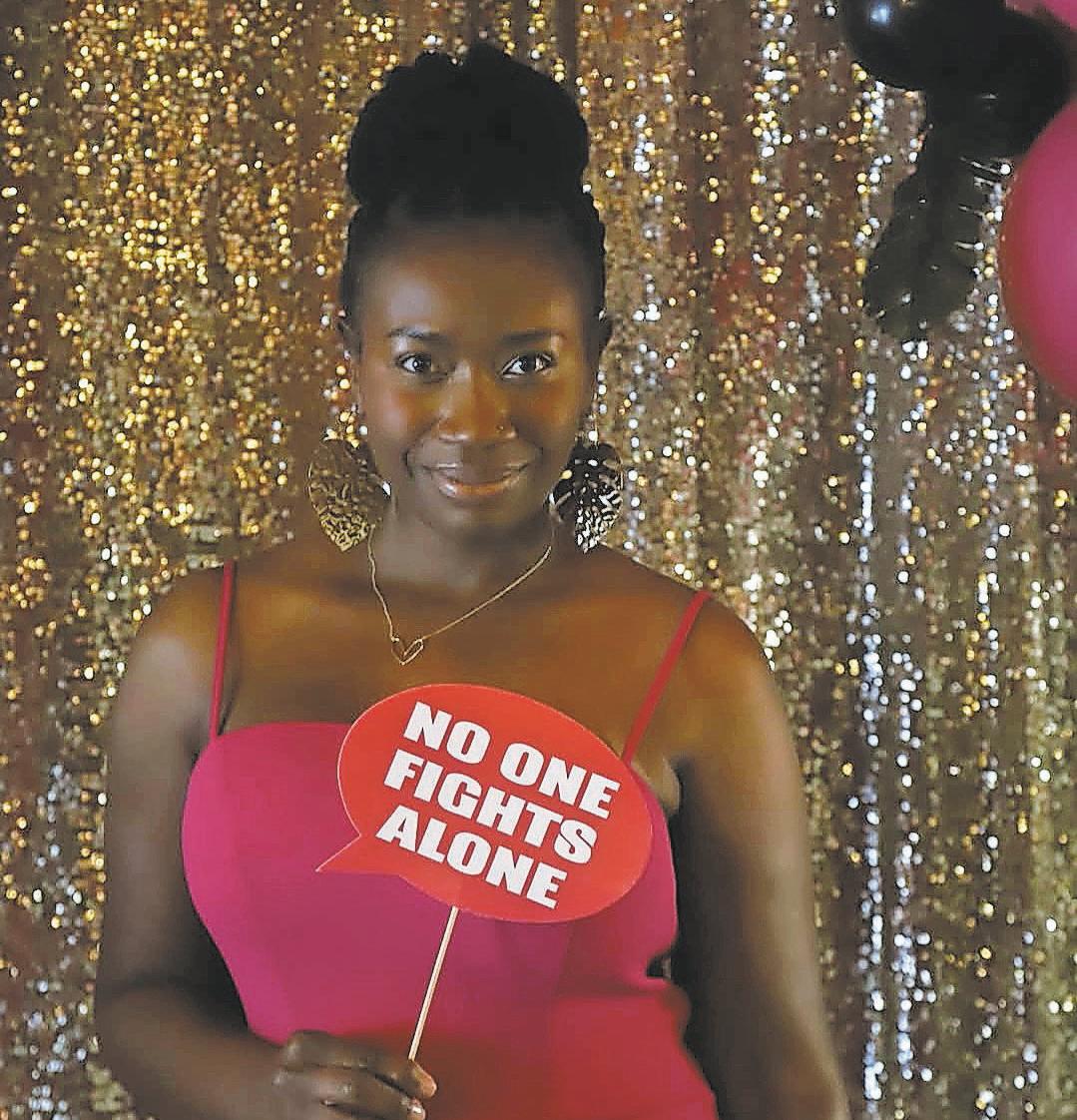
By Megan Sayles AFRO Staff Writer msayles@afro.com
At just 36 years old, Constance
“Connie” Chavis learned she had stage 3 breast cancer—a combination of ductal carcinoma in situ (DCIS) and invasive ductal carcinoma (IDC).
It wasn’t a lump or any major signs that led Chavis to the doctor’s office. It was her primary care doctor who suggested that she get a baseline mammogram. She wasn’t expecting news that would upend her life.
“At first, I was numb, frozen—like this can’t be happening. Then came anger, frustration and sense of being robbed of the life I thought I’d have. I didn’t have kids, I wasn’t married and suddenly, my fertility was at risk,” said Chavis. “I tried to handle it like a case at work, telling myself, ‘This has an end date,’ but that only made me avoid my emotions. I had to learn to sit in the pain and uncertainty.”
Her biopsy results came through on a Saturday—not in-person or over the phone, but on a virtual patient portal. Chavis, who is a social worker, asked one of her foster parents who happened to be a doctor to read the results to her. She said the moment felt unreal and cold.
Before she even had a chance to begin treatment, health care providers started telling her that she would have to stop working and go on disability. But, Chavis said, that wasn’t an option.
“I had foster kids on my caseload [and for] some of them, I was the only constant in their life. I wasn’t going to abandon them,” said Chavis. “On top of that, I’m a single woman. If I missed one paycheck, if I lost my insurance, it could mean lights off, bills unpaid and no safety net. Working wasn’t just about pride, it was survival. Cancer was hard enough, but the thought of being financially unstable on top of it? That fear was just as real.”
Treatment for Chavis was grueling— both physically and mentally. She underwent a double mastectomy with direct implants, chemotherapy with adriamycin and taxol, radiation and, later, had her
ovaries and tubes removed.
Emotionally, losing her long hair was devastating—not because of vanity, but because it felt like losing a piece of her identity. Friends and family even ghosted Chavis, abandoning her at a time when she needed them most.
Chavis’ treatment journey was further complicated by adverse encounters with medical professionals. She learned that her cancer had spread to her lymph nodes not from her doctor, but from a scheduler calling to set up a port. A fertility specialist bluntly asked her why she could not just “use someone else’s eggs.” She was told she had to pay $600 for a surgery she had already met her deductible for— money she was later refunded.
As a Black woman, she faced another, distinct burden.
“I felt like I couldn’t break down or be soft. I had to come armed with research, questions and a fighter’s spirit just to be taken seriously. The questions after visits were often insensitive. Even after my ovaries were removed, I was still asked, ‘You aren’t pregnant, right?’” said Chavis. “That lack of awareness cut deep. In so many moments, I wasn’t seen as a whole person, I was treated like a checklist. And that reality made an already difficult journey feel even heavier.”
What became a turning point for her was discovering the Young Survival Coalition (YSC), a nonprofit dedicated to supporting young adults who’ve been diagnosed with breast cancer through community-building, education and advocacy.
“That connection gave me a tribe, a community where women looked like me, understood me and gave me space to show up without a mask,” said Chavis. “Those once-a-month meetups were lifelines. They gave me back a sense of belonging and reminded me I wasn’t walking this journey alone.”
YSC was established in 1998 by a group of women who had all been diagnosed with breast cancer before age 40. Since then, it’s grown into an online community with 170 in-person local networking groups across the country.
The organization also leads Project 528, the first global needs assessment of
young adults impacted by breast cancer. Brianna Osofisan, a program associate for YSC, said the report was designed to identify shared challenges, devise solutions and to support breast cancer programs and research across the world.
“One of the things that stood out to me the most was how people are being told they have breast cancer. Most people were told over the phone that they had breast cancer, and so was I,” said Osisfan. “It’s such life-changing news to receive, but so many of us received it over the phone rather than in person, where we could be face-to-face with our provider and ask questions.”
Osofisan was diagnosed with triple negative breast cancer, an aggressive form, at 21 years old. After finding a lump, she went to get a mammogram but was initially told her chances of having breast cancer were slim because of her age.
Her treatment, which took place during her senior year of college, included fertility preservation, chemotherapy, a double mastectomy, radiation and reconstruction surgery. Her experience inspired her to join the team at YSC, giving her an opportunity to supply young survivors with the guidance, community and support she had been missing.
“We advocate for young adults’ voices being heard. Another one of the findings from the survey was that over half were told they were too young for breast cancer by their provider before receiving their diagnosis,” said Osisfan. “The awareness that young adults can and do get breast cancer is crucial for better treatment outcomes and care regimens.”
Both Chavis and Osofisan stressed that self-advocacy is paramount to navigating treatment and confronting a health care system that doesn’t always see young survivors. For Osofisan, hope for the future comes from the community that YSC continues to foster.
For Chavis, hope is rooted in her own journey through cancer and the strength she discovered along the way.
“My hope comes from knowing that even though cancer changed me, it didn’t end me,” said Chavis. “It gave me a new fire to live fully and encourage others to do the same.

By Victoria Mejicanos AFRO Staff Writer
Although rare, men are fighters and survivors of breast cancer—especially men of color—who often face less awareness, and worse outcomes.
A recent study done by the American Cancer Society found that “breast cancer incidence rates were 52 percent higher in Black men than White men.” Another study demonstrated that even with similar treatment, Black men have worse outcomes, leaving them 76 percent more likely to die from breast cancer than White men.
The American Cancer Society also stated, that “for men, the average lifetime risk of getting breast cancer is about 1 in 726.”
A pioneer of breast cancer
awareness was the late Richard Roundtree. As star of the movie “Shaft” and its sequels, Roundtree was viewed as the epitome of Black masculinity. When he was diagnosed with breast cancer in 1993, he remained private about the diagnosis until several years later, out of fear for the impact it would have on his career. After he had undergone treatment and was in remission, he realized his role as an advocate for male breast cancer survivors.
According to an interview with People Magazine, released soon after he became public with his battle with breast cancer, he spoke about why men shouldn’t be afraid to share their stories.
“I’m not embarrassed,” he said in the 2000 interview. “Breast cancer is unusual in men, yes, but you have to be
a man to get through this — damn right.”
In the same interview, Roundtree said he had a modified mastectomy, where his left breast was partially removed, after which he then went through six months of chemotherapy. Rountree’s story demonstrates that not only can Black men get cancer, but they can survive it. Though he beat breast cancer, Roundtree unfortunately died at 81 from pancreatic cancer in 2023.
The Center for Disease Control and Prevention (CDC) lists both symptoms and risk factors for men with breast cancer. Some risk factors associated with breast cancer include:
• Getting older: Risk for breast cancer increases over time, according to the CDC. Most breast cancers are found after age 50.

• Family history of breast cancer: A man’s risk for breast cancer is higher if a close family member has had breast cancer.
• Radiation therapy treatment. Men who had radiation therapy to the chest have a
higher risk of getting breast cancer.
• Hormone therapy treatment. Drugs containing estrogen, which can be used to treat prostate cancer, increase breast cancer risk in men.
• Liver disease. Cirrhosis or
scarring of the liver can lower androgen levels and raise estrogen levels in men, increasing the risk of breast cancer.
• Obesity. Older men who are overweight or obese have a higher risk of breast cancer than men at a healthy weight.
By Andrea Stevens AFRO Staff Writer astevens@afro.com
Two breast cancer survivors from very different walks of life are sharing their deeply personal journeys of surviving mastectomies and the long, emotional road toward healing. Their stories highlight the importance of faith, support and self-acceptance for women facing one of the most difficult health battles of their lives.
Clorie Tildon, 84, was first diagnosed with stage 4 breast cancer in 2003. A widow living independently, she went into remission but faced a second diagnosis just 18 months later.
“The second diagnosis followed with a mastectomy. That was my choice,” she said. Her decision to undergo a mastectomy came from a place of clarity.
Tildon credits her unwavering faith as the foundation of her strength.
“My faith in God helped me to realize that this is just my time to deal with this problem and to seek the Lord’s help and strength to get me through,” she said.
Her advice to others is simple but powerful.
“You have to be in sync with your body. Your body does give you symptoms many times, you just need to be more aware of what to do in order to zero in on those symptoms,”
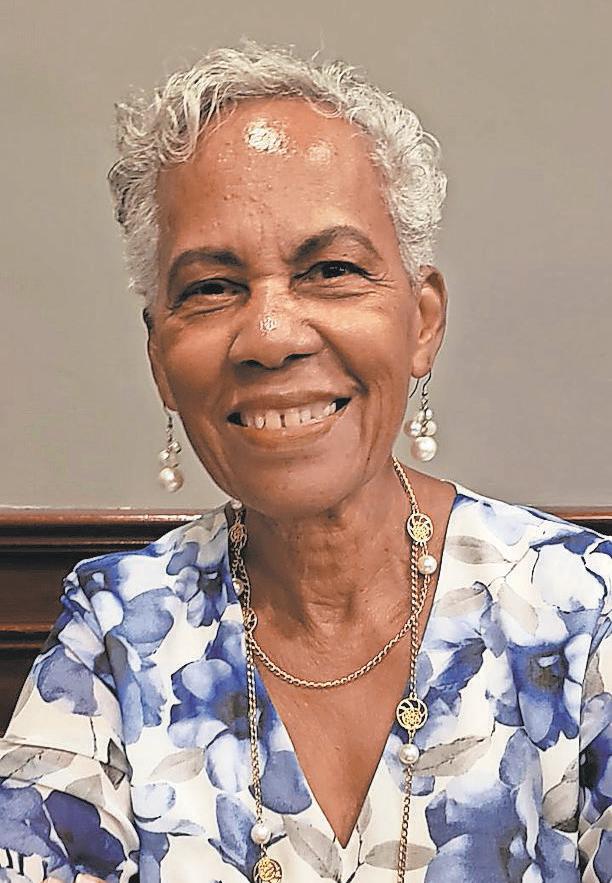
she said. “I would certainly urge others to walk with faith. The oncologist said to me, being positive about dealing with this illness is the best medicine he could recommend,”
Tildon acknowledges that mastectomies carry emotional weight, especially for women, but she sees the surgery as a necessary step toward health.
“It’s her body, and her understanding has to be clear that that doesn’t make or break her. It’s just something that needed to happen, and it doesn’t diminish her in any way,” she said.
Her trust in her medical team also played a key role in her recovery. She encourages women to seek the best care possible.
“You want the best doctor you can get. Think would your mother use these doctors? You want a doctor who has done it often and does good work,” Tildon said.
According to The National Library of Medicine, after women got mastectomies “the rate of depression, anxiety, and stress were 27.8 percent, 31.5 percent and 24.8 percent, respectively. Most patients (92 percent) experienced body image disturbances, and BC (breast cancer) survivors who completed treatment within 12 months were more likely to have body image disturbances than women who had a long time since completion of treatment.”
Millena Smith, 49, was diagnosed with breast cancer at 41 and underwent eight surgeries on one breast. Then doctors discovered cancer in the other breast. It was then that she decided to move forward with a double mastectomy.
Smith’s journey was marked by emotional turmoil and addiction. She found herself on a self-destructive path. She walked away from her marriage, her children and lived on the streets by choice during her lowest point mentally, although she was in remission physically.
“I couldn’t take the fact that it felt as if they took my womanhood. My breasts made me a woman, and I didn’t handle that loss well and began to self medicate,” she said. “I lost everything during my battle with addiction. But I got past it. I went to treatment, got myself together, and it’s been almost 10 years,” she said.
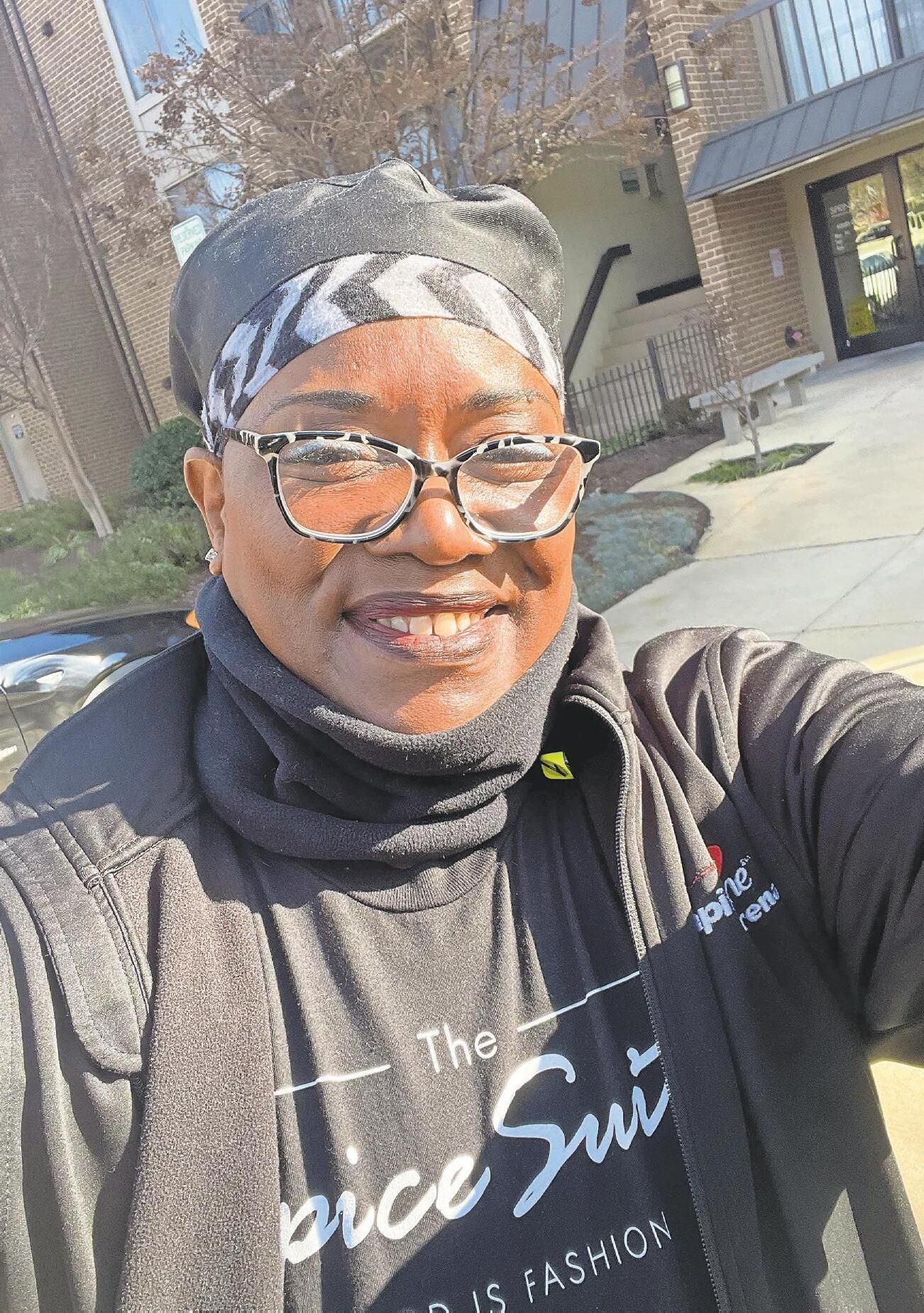
“For years I felt like I was a phony or a fake because I didn’t have real breasts. But now I throw my shirt on and keep it moving.”
Her path to self-acceptance was hard-fought.
“For years I felt like I was a phony or a fake because I didn’t have real breasts. But now I throw my shirt on and keep it moving,” she said.
For Smith, healing began with faith.
“Pray, be still and listen. That’s what I took from my journey” she said. “I learned most of the negative thoughts or emotions are just passing feelings. It’s not eternity. I control
my emotions, I no longer let them control me.”
Now, she sees her struggle as part of a larger calling.
“I would ask God ‘why did I have to go through all of that just to learn.’ Then I realized there’s a lot of people who didn’t get the opportunity to snap out of addiction. They’re still stuck, because of their trauma or negative thoughts,” she said. “By serving God, I realized advocating is my purpose.”

She was the queen of MTV in the 1990s, a star VJ who rubbed shoulders with scene-makers like Prince, Shaquille O’Neal and tap-dancing sensation
Savion Glover. At her peak, she was so popular — and influential — The New York Times anointed her “the hip-hop generation’s reigning ‘It Girl.’”
In recent years, however, Lewis became a celebrity influencer of a different sort: openly discussing her latestage breast cancer diagnosis, urging Black women like herself to get tested for the disease, and pleading with them to take the diagnosis (and doctor’s recommendations) seriously.
“I need you to share this with the women in your life who may be as stubborn as I was about mammograms, and I need you to tell them that they have to do it,” she said in an Instagram post from October 2020.
In June of this year, Lewis — a television personality who helped popularize and define a genre of music — died of the disease she had been fighting for the last five years. She was 52.
“She’s free, and in His heavenly arms,” Lewis’ sister, Lakshmi Emory, wrote in a Facebook post. “Lord, rest her soul.”
More likely to die from breast cancer
Breast cancer is the deadliest form of the disease for Black women in the U.S.
According to the Breast Cancer Research Foundation, Black women contract it at almost the same rate as White women but are around 40 percent more likely to die from it, due in large part to not accessing screenings such as mammograms.
Researchers have found evidence that persistent biases in healthcare regularly result in Black women getting ineffective treatment or caregivers ignoring warning symptoms.
Low-income Black women often don’t have access to healthcare providers who use the more accurate digital mammography or breast imaging services that higher-income women can access.
“The fear is a deeply rooted one: fear of fighting cancer and fear of the cost of healthcare, without a guarantee of positive outcomes,” says Dr. Faith Ohuoba, an obstetrician
and advocate for Black women’s health. “With these factors in the healthcare system, from trusting your provider to trusting the treatment modalities, it is hard to navigate.”
Lewis struggled with similar issues while fighting the disease.
That year, during Breast Cancer Awareness Month, Lewis took to Instagram to urge women to get preventative care, including mammograms. And like thousands of Black American women, she added that the cost of cancer treatment, a temporary loss of health insurance, and the upheaval of the COVID-19 pandemic had complicated efforts to fight the disease.
Lewis later revealed that she had decided against having a double mastectomy, as doctors had advised her to do when she was first diagnosed, and that she regretted that decision
“I felt I was doing well”
Earlier this year, Lewis wrote an op-ed for Essence magazine and shared that she tried several alternative methods to fight the cancer.
“In January 2020, my ultrasounds found that everything was still growing slowly,” Lewis wrote. “I felt I was doing well, and my doctors agreed,” until the COVID-19 pandemic lockdown two months later.”
“That’s what changed everything for me,” she wrote. “I could no longer get my treatments or the ultrasounds, because everything closed in California in March. By the summer of 2020, I felt the tumor growing again, as I wasn’t able to do anything to stop it.”
Having grown up in

experience into a VJ slot with MTV in 1997, the network’s heyday as a force in the music industry. She ultimately hosted some of the network’s flagship programs, including “Total Request Live” and “Hot Zone,” among others.
Following her MTV career, Lewis worked as a special correspondent for CBS News and made guest appearances on reality-TV programs like “Celebrity Mole-Yucatan.”
Fewer mammograms, more late diagnoses
Despite her career as a celebrity, Lewis fell victim to some of the same issues most Black women face in the doctor’s office.
A December Breast Cancer Research Foundation study identified a strong link between underuse of mam-
compound the issue: research indicates women living below the federal poverty line are almost twice as likely to receive a late-stage diagnosis as more affluent women. Moreover, low-income Black women often don’t have access to healthcare providers who use more advanced mammography or breast imaging.
In a statement, BCRF said that improving early-stage diagnoses for Black women is “crucial” to surviving the
disease, noting that early detection has a near-100 percent survival rate for five years. That’s compared to just 24 percent for late-stage diagnoses.
Those issues tend to dampen trust between Black women and their caregivers. But medical professionals stress the importance of getting regular medical checkups and cancer screenings anyway.
“What is easy to trust is the stories of our fellow sisters
sometimes. But even then, that can steer us wrong,” Ohuoba says. “The reality is you need to advocate for yourself. Despite the experience of racism or fear of misdiagnosis, the first step is to ask questions, as many as you need to have a greater understanding of your diagnosis and treatment options, and I also recommend that you seek second opinions.”
This article was originally published by Word in Black.
Southern California, Lewis’s rise to stardom began at Howard University in Washington, D.C. An activist working with teenagers in a youth leadership program, she auditioned for BET’s “Teen Summit” series and was chosen as the host. She parlayed that
mograms in Black women and later-stage breast cancer diagnoses. Those who did not have regular mammograms were three times more likely to be diagnosed with Stage 3 or 4 breast cancer, compared to the more treatable earlier stages of the disease. Economic factors










By
The superintendent of Iowa’s largest school district, who was detained Sept. 26 by immigration agents, falsely claimed a doctoral degree when applying for the job two years ago but was hired even after the school board learned about the misrepresentation.
Ian Roberts, the man immigration authorities say was living and working in the U.S. illegally, resigned Sept. 30 as Des Moines’ superintendent of schools. Roberts claimed in his 2023 application that he received a doctorate in urban educational leadership from Morgan State University in 2007, according to documents The Associated Press obtained through a public records request.
Although Roberts was enrolled in that doctorate program from 2002 to 2007, the school’s public relations office confirmed in an email that he didn’t receive that degree. It declined to say which degree requirements he hadn’t met.
The Des Moines school board learned before hiring Roberts that he hadn’t received the degree, but it still chose him to lead the district,

which serves about 30,000 students.
“As part of the background check process that was done at the time, it indicated that he did not complete -- he began but did not complete a degree from Morgan State,” district spokesman Phil Roeder told the AP. He and the board declined to comment further about how the information
By Ashlee Banks Special to the AFRO
Members of Congress failed to reach a funding deal by the Oct. 1 deadline, shutting down the federal government and throwing hundreds of thousands of workers into uncertainty.
Officials ordered agencies to shutter offices, furlough nearly 750,000 employees and even plan permanent layoffs. The White House directed departments not only to pause routine services but also to eliminate jobs, accelerating Trump’s pledge to shrink the federal workforce.
U.S. Rep. and Congressional Black Caucus Chair (CBC) Yvette Clarke (D-N.Y.- 11) said in a statement that the government shutdown is a “crisis entirely of the Republican party’s making.”
“Unfortunately, Black communities will be forced to bear the brunt of their political games,” said the CBC chair. “The GOP spending proposal includes the most aggressive attack on healthcare in modern history, slashing Medicaid and Medicare at unprecedented levels. These cuts are not abstract, they are life-or-death decisions for millions of Americans, especially the 1 in 5 Medicaid enrollees who are Black.”
U.S. Rep. Glenn Ivey (D-Md.4) told the AFRO that due to the shutdown families face immediate harm.
“They’ve dug a gigantic healthcare hole for working Americans,” he said. “The trillion in cuts to Medicaid is devastating. Letting the ACA tax credits expire is going to
be devastating in just a few months, and people are going to end up having to either pay a lot more for health care coverage or just give it up altogether.”
U.S. Rep. Hank Johnson (D-Ga.-4) criticized Republican lawmakers for their absence as the government faces a shutdown, saying the American people need a Congress that advocates on their behalf.
“Democrats are in D.C., while our Republican colleagues are missing in action,” said Johnson. “The American people need a Congress that works for them.”
Congress failed to meet its funding deadline after Democrats pressed for an extension of Affordable Care Act subsidies, cautioning that millions of Americans could face sharply higher premiums if the credits lapsed. Republicans declined to negotiate, leaving the nation to confront its first federal government shutdown in six years.
U.S. Rep. Summer Lee (D-Pa.-12) said in a statement that this shutdown “was preventable.”
“Trump and Republicans slashed Medicaid in the socalled One Big Beautiful Bill Act and refused to extend Affordable Care Act tax credits to keep health insurance more affordable,” she said. “With their control of the White House, Senate, and House of Representatives, they had the opportunity to mitigate this harm but instead refused to negotiate in good faith and
was handled at the time.
The background check was conducted by a third party and is not a public record, Roeder said.
Roberts, who is challenging the order to deport him to his native Guyana, remained jailed Oct. 1 in Sioux City, about 150 miles (240 kilometers) northwest of Des Moines. When asked
to comment on Roberts’ false application claim, his attorney, Alfredo Parrish, said he was looking into the matter and would discuss it with his client.
The job profile in the web archive of JG Consulting, a firm the district hired to assist in its 2023 superintendent
Continued on B6
By DaQuan Lawrence AFRO International Writer DLawrence@afro.com
Assata Olugbala Shakur, born JoAnne Deborah Byron, a political and human rights activist, has died at the age of 78, according to Cuba’s Ministry of Foreign Affairs.
Cuban authorities said the former Black Panther Party member and a leader of the Black Liberation Army died Sept. 25 in Havana, Cuba on Sept. 25, due to aging and health complications. In 1977, Shakur was convicted by an all-White jury for the murder of a state trooper in New Jersey during a standoff with law enforcement. While serving a life sentence, the Black liberation activist escaped prison in 1979 and fled to Cuba, where she was granted political asylum by then-leader Fidel Castro.

Shakur’s resilience against political repression has served as a source of inspiration for generations and multitudes of activists, educators, researchers and many more around the world. She maintained her innocence throughout her lifetime, and her autobiography is a must-read for students of history and many people
Continued on B6
By Megan Sayles AFRO Staff Writer msayles@afro.com
United Way of Central Maryland is celebrating 100 years of strengthening lives and neighborhoods across Greater Baltimore with a benefit concert on Oct. 11. The show, which will take place at the Joseph Meyerhoff Symphony Hall, will be headlined by Grammy-award winning artist Common with more performances from Billboard-music award-winner CeCe Peniston and Baltimore-based singer-songwriter Elyscia Jefferson.
For decades, United Way of Central Maryland has worked to build healthy, resilient communities, create opportunities for youth and boost economic security for families. The benefit night will be a chance to celebrate the power and promise of the Greater Baltimore region, while mobilizing community members to further support the work of the organization.
“United Way has accomplished amazing things over the past century,” said Franklyn Baker, CEO and president of United Way of Central Maryland. “We’ve helped our community through wars, depression, financial crises, major health challenges— including a global pandemic— and more, and we’ve always evolved to meet new needs in our region.”
Established in 1925, United Way of Central Maryland is one of more than 1,000 local chapters of the larger United Way global network that foster community-based solutions to local challenges.
Baker said some of United Way of Central Maryland’s top accomplishments in its history have been launching its workplace giving model; expanding into direct services in housing, health, education and economic advancement; and being recognized as a flagship, go-to partner within the global and national United Way networks.
For him, the organization’s legacy is demonstrated in the stories of people and neighborhoods who have been impacted by its work.
“There are stories like struggling high

school students who have graduated and gone on to college or trade school, veterans who committed a minor legal offense who are now leading stronger, more purposeful lives and families in financial crises and on the verge of losing their homes who are now in safe, stable housing— and so many more,” said Baker. “The people we serve have such strength and tenacity, and we leverage that to help them succeed.”
The upcoming benefit concert will reaffirm United Way of Central Maryland’s pledge to promote equity and increase access to basic needs in Greater Baltimore.
Peniston, who is an ambassador for United Way Worldwide, will perform a song written about the work of the organization called, “United is the Way,” with accompaniment from the Baltimore City College Choir. She said being a part of the concert feels like a blessing.
“The beautiful thing is it’s not just a concert— it’s a movement. It’s to continue to help the community to grow through opportunity,” said Peniston. “Giving back to the community is something that I completely love to do. I feel like God gives me so much and being able to give back to the community is a mission for me.”
Jefferson, a native of Baltimore County, also echoed Peniston’s sentiments,
noting that she admires the mission of the organization.
“I love how dedicated they are to the future and their love for helping people,” said Jefferson. “I think that’s really important in this day and time and for this community. I know a lot of times we don’t see a lot of that— community, love and helping each other— but it aligns with what I stand for. I have such a love for people and for moving our future in a better direction.”
For United Way of Central Maryland, success looks like communities where everyone thrives. Baker said this means the organization must achieve excellence in every area of its work while doubling down on innovation, research and support for best practices. He encouraged people to snag their benefit concert tickets to celebrate the history and future of the organization.
“This is a once-in-a-century celebration— bringing artists, community leaders, and neighbors together to shine a spotlight on hope, resilience, and the power of community,” said Baker. “The concert is about awareness to fuel our mission for the future—so that every family and neighborhood in Central Maryland has the opportunity to thrive.”
Tickets for United Way of Central Maryland Centennial Benefit Concert can be found at uwcm.org/concert.

new data center slated for Prince George’s County, Md.
cause of concern
worried about energy consumption, electric bills and environmental
By Peter Riccio and Holliday Woodard
A proposed data center project in Prince George’s County, Md., was paused on Sept. 16 to give a task force time to evaluate potential impacts on public health, the environment and energy demand.
The Prince George’s project is controversial, underscoring growing public concerns over the proliferation of data centers nationwide.
Data centers can range from massive warehouse-sized facilities to office buildings and are the physical backbone of everything digital.
The growth of these centers has surged, with 44 operational or planned data centers in Maryland, according to Data Center
Map. Prince George’s County is one of the latest battlegrounds where local opposition has slowed what data center supporters insist would be a major boom to the economy.
“The only reason the county is considering data centers is for money,” Prince George’s County Council member Wala Blegay said in an interview with Capital News Service. “The reality is that our commercial tax base is very low. We’re mostly relying on residential (taxes) because our residents are not able to get relief on the high property taxes that we have here. That is why we are looking at data centers.”
Blegay’s District 6 borders the District of Columbia and is mostly inside the Capital Beltway, encompassing communities including
“We’re mostly relying on residential (taxes) because our residents are not able to get relief on the high property taxes that we have here. That is why we are looking at data centers.”
Suitland, District Heights, Marlow Heights, Camp Springs and Forestville.
The county council created the Qualified Data Center Task Force in April 2025. The council faced local
protests at their three meetings in July from residents concerned about energy consumption, electric bills and environmental factors.
By Tashi McQueen AFRO Staff Writer tmcqueen@afro.com
Washington, D.C. Mayor Muriel Bowser (D) unveiled new legislation Sept. 29 to support the District’s Growth Agenda, which is the city’s strategy to ensure economic opportunity for its residents.
The legislative package includes four bills to streamline zoning appeals, create new business revenue and provide an appeals process for burdensome taxes. Another bill aims to expand opportunities for small businesses and entrepreneurs.
According to the U.S. Small Business Administration’s Office of Advocacy, in 2024, there were 78,026 small businesses in Washington, D.C., making up 98.2 percent of businesses in the District. Among them, 26,422 are Black-owned
small businesses.
The mayor’s fiscal year 2026 Grow D.C. Budget invests $52 million for early-stage, D.C.-based tech companies and $2.4 million for tech start-up accelerators. It also adds another $5 million to the Vitality Fund to help stimulate and maintain the District’s economic growth.
“We are seizing opportunities, supporting companies that are growing in our neighborhoods, attracting new firms to our city and generating jobs and a tax base that allow us to invest back into our communities,” said D.C. Councilman Kenyan McDuffie (Ind.-AtLarge), chair of the council’s Committee on Business and Economic Development. “All eight wards will see the benefits of what these investments mean.”
In partnership with the new legislation, Bowser also announced over $1.5 million in awards from the Vitality
“We are investing in our future.”
and Growth Funds. These two incentive programs help businesses in high growth industries such as the technology and life sciences sectors.
“Together, these investments and much needed legislative changes send a clear message, D.C. is open for business,” said Bowser during the live-streamed event. “We are investing in our future.”
Bowser explained that the Vitality Fund is a corporate attraction tool to help companies relocate or expand to D.C.
“Since launching the Vitality Fund, we have invested about $4 million to support companies relocating or expanding,”
By Deborah Bailey AFRO Contributing Editor
With childhood vaccination rates in decline across the nation, Washington, D.C. health officials are encouraging families to continue the good work that has brought national recognition to the District for record childhood vaccination rates.
D.C. public school kindergarteners started the 20242025 school year with a 92.5 percent vaccination rate for MMR (measles, mumps, and rubella), the highest vaccination rate for District students in five years. The D.C.’s childhood vaccination rate jumped to almost 93 percent is a record increase of 19 points from pre-pandemic vaccination rates. This surge represents the largest increase in vaccinations in the country, recently noted by the Big Cities Health Coalition, a coalition of 35 of the nation’s largest health departments (including Washington, D.C.)
D.C. Public Health officials partnered with the Office of the State Superintendent of Education, D.C. public schools, private schools and community providers to make vaccines widely available across the city and get the word out to families and trusted community partners.
The communications division of the D.C. Health Department responded to the successful vaccine initiative in an exclusive interview with the AFRO
“We’re very pleased with the District’s progress to improve immunization compliance in school-age children, particularly for kindergartners and the improved MMR rate which helped to protect our
residents from the measles outbreaks that occurred earlier this year,” department officials said. “DC Health and our education partners have been working closely to ensure our children are in compliance with the law, thereby reducing the number of children who may be temporarily excluded by their school when they do not have all their vaccines needed to attend school,” News about D.C.’s increase in childhood MMR vaccination rates comes amidst recent changes in the childhood vaccination schedule made by the CDC’s Advisory Committee on Immunization Practices (ACIP). On Sept. 18, this federal committee, newly appointed by Secretary of Health and Human Resources, Robert F. Kennedy, voted to make controversial changes in the childhood immunization schedule including changes to the nation’s measles, mumps, rubella and varicella vaccine without new safety data explaining those changes.
Sen. Bill Cassidy (R-La.), chair of the Health, Education, Labor and Pensions committee (HELP), a gastroenterologist and graduate of the LSU School of Medicine, expressed skepticism about the new immunization schedules. In August, Cassidy called on the CDC to postpone its recent meeting on vaccine guidance until the senate committee could provide further oversight into the process.
Across the nation, children’s vaccination rates are declining compared to pre-pandemic years. CDC state and local immunization data show that in 2024-2025 kindergarten MMR rates
said Bowser. “These companies have committed to create and retain more than 1,300 high-paying jobs and occupy more than 230,000 square feet in the District.”
Bowser said the new Growth Fund, which was launched earlier this year, was designed to help support small business growth in Washington, D.C.
“This year, nine companies are receiving awards through the Vitality and Growth Funds,” said Bowser. “Together, they will create 250 new jobs, retaining 72 jobs, occupy 56,000 square feet and invest more than $4 million in capital investments.”
Cannon Design, Matters Graph and Solar Solution were recipients of the Vitality Fund. Through the Growth Fund, Agrology PBC, EpimoniPharma, Equinox Outsourced Services, ITSCybersecurity, Statt and Current Surgical received awards.


from B2
nationally were 92.5 percent, a decline from 95 percent in pre-pandemic 2019-2020 levels. In its Healthy People 2030 publication, the CDC listed a target of 95 percent vaccination rates needed to prevent community transmission of disease.
A combination of vaccine skepticism by current federal health officials accompanied by recent local and state efforts to ban vaccine mandates are eroding the once trusted vaccine guidance that existed for decades in the United States.
On Sept. 3, Gov. Ron DeSantis (D-Fla.), announced plans to phase out all vaccine mandates in the state. Desantis made the announcement alongside his state surgeon general Dr. Joseph Ladapo, at a press conference. Ladapo, who is a long-time vaccine sceptic, said, “people have a right to make their own decisions, informed decisions.”
“We’re
pleased with the District’s progress to improve immunization compliance in schoolage children, particularly for kindergartners.”
On Sept. 16, the council approved a resolution pausing the development of current and future data center projects until the task force has completed its work. The task force is expected to release its findings in November.
“There is no point in having a task force if all of these projects can move forward,” Blegay said. “We’re studying all of these infrastructure issues. So we’re talking about the next three months, we’re going to be passing legislation to address that… and we don’t want people to rush out and expedite their process, so they’ll get ahead of us.”
Prince George’s County Executive Aisha Braveboy told Washington’s WTOP radio that the county council’s 2021 decision to speed up the data center approval process “was a huge mistake because the residents have a stake in where these data centers are located.”
“I’m in support, generally, of data centers,” Braveboy said. “I do believe it’s a really good economic tool in the right locations.”
“I think we gotta look at what the land use implications are and be really thorough in these decisions,” Del. Ashanti F. Martinez,
D-Prince George’s, said in a Sept. 18 Instagram post. “You know, at the state level we try to provide as much oversight as possible, and I’m really concerned that we are moving a little fast on the data center conversation.”
Access to electricity and the price residents pay are critics’ primary concerns, as the average monthly electric bill for Maryland, according to poweroutage.us, stands at $167.55. Electric bills are expected to slightly rise with the anticipated new data centers, according to a letter from the Office of People’s Council for the State of Maryland.
“What we know is that no data center is going to be turned on, especially with high gigawatts, not within the next four to five years, because of all the issues with electricity and energy sourcing,” Blegay said.
Maryland currently does not produce enough electricity on its own, so it relies on importing the shortfall from outside the state.
“Historically, Maryland has imported about 40 percent of its annual electric needs from other states,” according to a 2024 fact sheet from PJM, a transmission organization that coordinates the use of wholesale electricity among 13 states and the District of Columbia.
As of last year, data centers accounted for about 4.4 percent of total U.S. electricity consumption, according to a report from the Department of Energy (DOE).
“(AI is) a much more significant data hog than any type of search you have today, and it’s something that is exponentially growing with the types of searches Americans are doing,” Michael Kratsios, director of the White House’s Office of Science and Technology Policy, told a Sept. 10 hearing of the Senate Commerce, Science & Transportation Committee’s science, manufacturing, and competitiveness.
The increased use of AI has provided an opening for Republicans who advocate a renewed reliance on traditional fuels to meet the energy demand. Sen. Bernie Moreno, R-Ohio, for example, wants “good, old-fashioned” coal and gas to provide U.S. power needs.
“When you had 94 percent of new power generation in America over the last four years, be it wind and solar, that probably isn’t nearly enough to produce the kind of energy that we need to power the AI revolution,” Moreno said at the subcommittee hearing.
But Sen. Edward Markey, D-Mass., warned
that “Americans’ electricity bills are going to rise by as much as 25 percent over the next four years - 25 percent because of data center demand. It’s not just a future fear, it’s a present problem.”
“So, Mr. Kratsios, do you think it’s appropriate that the administration is forcing Americans to pay more on their electricity bills while using their taxpayer dollars to make the problem even worse by funding the unfettered growth of the AI industry?” Markey asked.
“I do not believe there’s been an administration in American history more committed to growing power generation for the American people and lowering energy costs for everyday Americans,” Kratsios responded. “And I’m proud to work for a president and administration that has that level of commitment.”
In October, PG County will host another public council meeting to continue discussions about the data center. By the end of November, the Prince George’s County Qualified Data Center Task Force will report its findings, giving the council six months to decide on next steps, according to the resolution.
This article was originally published by Capital News Service.



Office of the State’s Attorney for Baltimore City
Ivan Bates serves as the Baltimore City state’s attorney. Since he took up the post in 2023, violent crime in the city has decreased significantly, but he believes quality-of-life crimes, like car break-ins, public drug use and more, continue to drive residents and businesses out of the city. Shown here, Bates (left), during a partner conversation with Mark Anthony Thomas, CEO of the Greater Baltimore Committee.
By Megan Sayles AFRO Staff Writer msayles@afro.com
V
iolent crime in Baltimore has reached record lows, with the city experiencing its lowest homicide numbers in over 50 years as of September 2025.
Still, Baltimore City State’s Attorney Ivan Bates believes the city has work to do when it comes to tackling quality-of-life crimes that occur on a dayto-day basis. These offenses include car break-ins, open-air drug use, public
intoxication, vandalism and more.
“Unfortunately, it feels like the message to the citizens has been, ‘Look, you didn’t get murdered, so you should be happy.’ That’s crazy to me,” said Bates. “My feeling is that we need to focus now on quality-of-life problems.”
To address those problems, Bates said his office created a citation program two years ago to hold offenders accountable without criminalizing them. The system allows law enforcement to issue citations for low-level offenses — like petty theft and drug

AFRO Staff Writer
tmcqueen@afro.com
The Maryland Transportation Authority (MDTA) recently announced the beginning of a new phase in the rebuilding of the Francis Scott Key Bridge, which collapsed on March 26, 2024, after being struck by a cargo ship, the Dali. The new phase includes the Test Pile Program, which began over the weekend of Sept. 27, with six steel test piles delivered to Baltimore via a barge. Through the program, testing piles will be installed
to provide MDTA with data to determine if the bridge design is viable and to ultimately ensure the new structure’s stability. A “pile” is a vertical cylinder-like structural element, often made of steel or concrete. Piles are driven deep into the ground or riverbed to help strengthen the foundation of a structure when the surface soil is not stable enough to support it on its own. According to MDTA, the Test Pile Program sequence is as follows: 1. The piles will be lifted into
possession — that bring people into court, where they can be ordered to complete community services or connected with services such as inpatient drug treatment. Bates said he doesn’t think Baltimore police have taken advantage of the tool as much as they should. In the two years since the program started, just over 1,000 citations have been written citywide, with only about 300 coming from the Baltimore Police Department.
By Ericka Alston Buck Special to the AFRO
Joy and pride filled the air at the University of Maryland, Baltimore’s Southern Management Companies Campus Center, as dozens of Baltimore adults walked across the stage in cap and gown on Sept. 19. The moment marked the second-ever graduation ceremony for the Baltimore Excel Center and Goodwill Industries of the Chesapeake’s Workforce Development Programs, a milestone that celebrated not only diplomas and certifications, but also second chances, determination and new beginnings.
The Baltimore Excel Center, a tuition-free high school for adults, was created to address a staggering need: nearly 80,000 Baltimore residents lack a high school diploma. The program provides wraparound support—including free on-site childcare, career coaching and life coaches—to help adults succeed.
Alongside those earning those high school diplomas, participants in Goodwill’s Workforce Development Skills Training Programs were also honored, as they became certified nursing assistants, geriatric nursing assistants (CNA/GNA) or pharmacy technicians. Graduates from the trade programs were also recognized, as they are now ready to step into high-demand industries.
“This graduation is incredibly significant as our second ever,” said Sherry DeFrancisci, director of The Excel Center Adult High School. “We graduated 53 individuals and 100 percent of them earned not only their diploma, but also an industry-recognized certification and a viable career path.”
Overcoming barriers, building confidence For many, ranging in age from their 20s to their 80s, the journey was not easy. Balancing jobs, parenting, housing instability and personal
By Tashi McQueen AFRO Staff Writer tmcqueen@afro.com
The Baltimore Community Foundation’s (BCF) Black Philanthropy Circle (BPC) has reached a significant milestone in 2025, making $1 million in investments to several Black-led and Black-serving nonprofit organizations throughout the Charm City area.
“We received over 250 applications and read every one and scored them,” said Alicia Wilson, co-founder of the BPC and vice president for civic engagement and opportunity at Johns Hopkins University. “We came up with a top 30, and then put that out to the entire body of the circle to vote upon the top 10 that ultimately was awarded.”
BPC was founded in 2022 with a goal of awarding $250,000 in grants annually. Over four years, BPC has granted $25,000 to 10 chosen applicants each year. Voting members commit $10,000 annually, but Wilson stresses that no donation is too small.
“You can give when you have abundance,” said Wilson. “You can give when you also are on your own financial journey, like many of us. It’s nice to give together.”
Through this giving circle, anyone can contribute. BPC supports organizations in areas such as arts
and culture, education, health and wellness and community organization.
The AFRO spoke with leaders from several of this year’s grantees to discuss how the funding has supported their initiatives.
“The funding we received was catalytic,” said Arnetta Shelton, founder of Eastside Uplift and chief of Community Violence Intervention for the City of Baltimore. “It is the foundation that will help us through this whole fiscal year. The grant strengthened our educational and empowerment efforts through our community fun day, bi-monthly workshops for community members, as well as the Pull Up and Rize programs that we have through the nonprofit.”
Through the Pull Up program, Eastside Uplift goes to the homes of two families each month with hands-on support such as groceries, utility assistance and transportation. Their community days host resource fairs with entertainment and food for residents. Quarterly workshops, held virtually and in-person, address topics like financial literacy, homeownership and parenting support.
Founded in September 2024, Eastside Uplift has already supported over 200 people through its annual community fun day and around 22 families through the Pull Up program. Shelton said the nonprofit hopes to expand nationally.

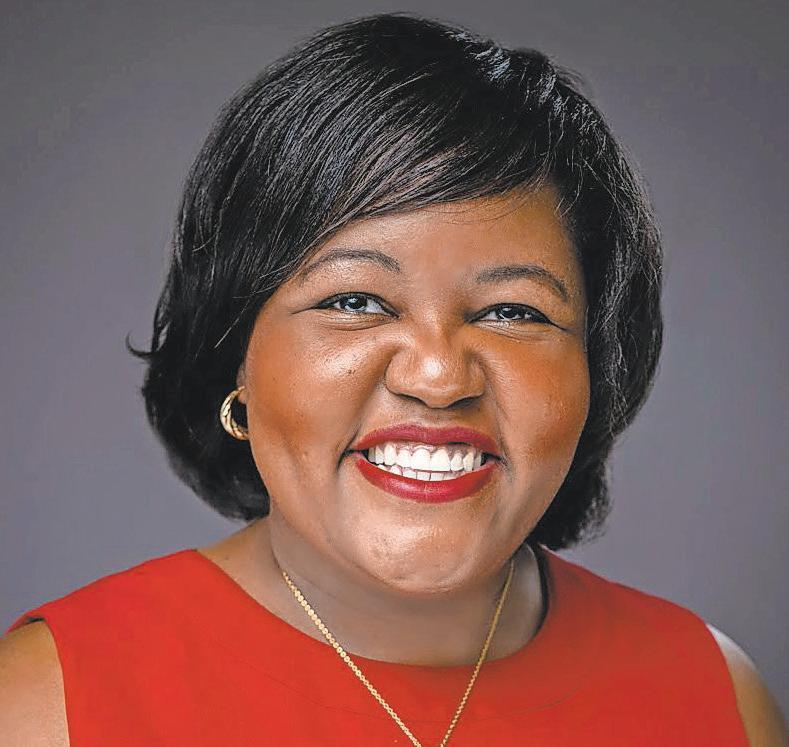
“I do recognize that there’s an officer shortage, but if we’re writing citations, we begin to hold those individuals who are consistently stealing packages off stoops, graffitiing or, no matter what it is, accountable,” said Bates. “But, we are not doing that. We have phenomenal partnerships in the violent crime arena. We need to have those same partnerships in quality of life.”
While Bates criticized the city for its handling of quality-of-life crimes, Baltimore City Mayor Brandon M. Scott pointed to measurable declines. According to information released by Scott’s office, carjackings are down 21 percent, robberies are down 26 percent and auto thefts are down 32 percent compared to last year. These decreases are on top of declines that took place from 2023 to 2024.
He also highlighted his strategy for curbing public drug sales and use.
“We’re not going to go back to the days of, ‘Hey, there’s a group of people standing out there on the corner, everybody that’s out there is selling drugs, we’re going to arrest them all,’ because that doesn’t make the city safer,” said Scott. “We’re
doing it in a very intentional way.”
From Aug. 28 to Sept. 4, Scott said police made nearly 1,400 controlled dangerous substance arrests alone. He emphasized that tackling Baltimore’s drug market goes beyond arresting individual dealers—it requires targeting the networks behind them.
“When you’re talking about breaking down an open-air drug market, pulling off a corner boy isn’t going to make that go away,” said Scott. “What’s going to make it go away is actually doing an investigation and tearing down the organization.”
Scott also pointed out that arrests don’t necessarily coincide with drops in crime. For example, in 2004, there were more than 91,000 arrests and 278 homicides in the city of Baltimore. In 2024, the city experienced 201 homicides, but there were only 17,872 arrests.
“It’s never been about how many, but about who you’re arresting, and that’s why we’re focused the way we’re focused,” said Scott.
The efficacy of Safe Streets
One mechanism of public safety in Baltimore
that Bates questioned was the city’s Safe Streets program, a public health-based violence prevention program started in 2007. The program employs outreach workers and violence interrupters, including returned citizens with firsthand experience of street life, to de-escalate and mediate conflict.
Though he said he understands the program’s concept, he is unsure about how effective it’s been.
“With Safe Streets, there’s no data. If we’re supposed to have reformed criminals convince current criminals to drop their weapons and guns, how is that happening? If it’s a phone call, what’s the number?” said Bates. “Where’s the data? How many times have there been interventions? How many times have there been mediations? Where are these mediations happening? We don’t know.”
The mayor, however, argued that Safe Streets’ effectiveness has already been proven.
“I think the state’s attorney must be living in a different reality than everyone else. There’s been multiple, multiple reports done on Safe Streets, including one done by Dr. Daniel Webster at Johns Hopkins — one of the most
well-respected people when talking about gun violence in this country — that talks about its success,” said Scott.
Webster’s report, released in 2023, analyzed Safe Street’s effect on gun violence in Baltimore from 2007 to 2022. It found that the program was associated with reductions in homicides and non-fatal shootings. However, the study also noted that some neighborhoods—especially newer sites or those with staffing issues and implementation delays—showed little or no measurable improvement.
Scott called on the state’s attorney to sit down with the directors of the Mayor’s Office of Neighborhood Safety and Engagement and Safe Streets to get a better understanding of the initiative’s success.
“These folks do great work. The data has been proven time and time again that they do so,” said Scott. “Anybody that is saying otherwise is just being disrespectful and perpetuating, quite frankly, racist-based tropes that folks who used to be involved in the life of the street can’t turn their life around and be involved in preventing violence in the streets of Baltimore.”
hurdles often stood in the way. That’s where the Excel Center’s unique model shines.
“Overcoming barriers is the biggest hurdle to returning to school and then remaining in school,” DeFrancisci explained. “Our greatest assets are our teachers and life coaches. They are in constant contact with our students—checking on attendance, making sure they have childcare, food and healthcare referrals and providing moral support.”
She also reflected on the ripple effects graduates will have beyond themselves.
“We regularly hear about the ripple effects of their successes. Extended family and friends are motivated by our graduates’ newfound confidence, job opportunities and ability to self-advocate.” DeFrancisci said. “With the assistance of the Family Support Center, parents feel more secure in their ability to support and care for their children. Studies show that children of high school graduates are more likely to graduate

themselves, breaking the cycle of dropping out.”
Shawn Stevenson: “Better now than never”
One graduate, Shawn Stevenson, shared how the Excel Center transformed his life after



putting his education on hold more than two decades ago.
“The Excel Center has been more than amazing—it’s been the opportunity of a lifetime,” Stevenson said. “I thank God that He gave me the strength to continue my education journey 22 years later. Better now than never.”
Stevenson admitted there were moments when giving up felt easier. But dedicated teachers and staff kept him moving forward.
“At times I wanted to quit, but the teachers at the Excel Center wouldn’t let me. Mr. Michael, Ms. Leslie, Mr. U, Mr. Smith—they really went above and beyond. If I didn’t understand the work, they’d sit with me one-on-one. That kind of support made all the difference.”
The road wasn’t without sacrifice.
“I worked a full-time job, paid for parking just to get to class, rushed to be on time, finished assignments, and tried to keep a positive attitude,” Stevenson recalled. “Guess what? I did it. I am so proud of myself and my classmates. This is a
position using a crane and tripping barge.
1. The piles will be placed in a template and stabilized with a vibratory hammer.
2. The piles will be driven into the riverbed with a hydraulic hammer.
3. The load frame will be placed on the six piles and exert vertical and horizontal pressure.
4. The equipment and piles are equipped with instruments which will report data to ensure the design models are accurate.
“We’ll be working on one pile at a time,
“It is our duty and responsibility to pull people forward, to reach back and make sure that we are investing,” said Shelton.
Habitat for Humanity of the Chesapeake also received support.
“The grant that was received was for a mortgage buy down,” said Paul Erbes, chief development and marketing officer. “We offer each homeowner a zero percent mortgage, because it helps the family stabilize and remain in their homes for a longer period of time.”
Erbes said the grant directly provided one family with a new home and a zero percent loan, compared to a typical mortgage rate between 6 percent and 8 percent. The program also makes housing more affordable by basing payments not on the home’s value, but on the family’s income.
“More than 80 percent of our homeowners are African American,” Erbes said, noting that this investment directly impacts African American neighborhoods where they’re building homes.
“This graduation is incredibly significant as our second ever.”
lifetime memory I will never forget.”
Looking ahead, Stevenson hopes to continue his journey. “I want to pursue business management and one day, barber school. In the next five years, I plan to open my own shop,” he said. “To anyone thinking it’s too late to go back, don’t believe that. The Excel Center is the place to be. They’ll help you get through it.”
A community uplifted
The Sept. 19 ceremony was more than a graduation—it was a celebration of Baltimore’s resilience, of families finding stability and of individuals reclaiming dreams once thought out of reach. According to Goodwill, Marylanders with a high school diploma earn on average $8,622 more annually than those without one, a difference that can mean steady housing, reliable employment and greater opportunities for entire families.
And while the program has proven life-changing for its graduates, demand still outpaces resources.
“We currently serve about 200 students per term, but we still have a waitlist of 400 potential success stories we can’t reach yet,” DeFrancisci noted. “We have the space and the willpower, but not the sustainable funding to add the teachers and coaches needed.”
The graduates of the Class of 2025 stand as proof that with determination, support and opportunity, second chances can blossom into lifelong success.
probably one pile a day, and for up to two hours of driving,” said MDTA Chief Engineer Jim Harkness in an announcement video released Sept. 26. “All these piles are going to have instrumentation in them; they’re going to give us readings. Once we have the six piles all driven into place, we’re going to sit a very large load frame on top of those, and that is going to essentially let us get additional measurements.”
Nearby communities can expect this work to take place over the next six to eight weeks.
Crystal Lee, deputy director for Baltimore Educational Scholarship Trust (B.E.S.T.), said the grant has helped them support 75 students in grades K-5 with financial need.
“That’s changing 75 lives,” said Lee. “This level of support covers a gap for them while enabling their students to have a wonderful, fun summer experience that they can then go back and share with their peers and classmates at their independent school.”
B.E.S.T. partners with 17 independent schools, including Gilman, to recruit and support academically ambitious African-American students who may lack financial resources.
The program offers leadership opportunities, a parent online learning center, a summer transition program for rising middle schoolers and college-bound support.
BPC’s $1 million milestone shows the power of collective giving. By funding local Black nonprofits each year, the circle strengthens community-led solutions to the challenges Baltimore residents face daily.
chose to shut down the government.”
The Senate rejected multiple temporary funding bills on Sept. 30, including one backed by House Republicans and another drafted by Democrats. Senate Majority Leader John Thune insisted Republicans would discuss health care separately but refused to link it to a stopgap deal.
However, Sen. Chuck Schumer (D-N.Y.) vowed to keep pressing the issue.
“Americans are hurting with higher costs,” the Senate minority leader said after Tuesday’s failed votes.
On Oct. 1, agencies began closing offices, canceling contracts and suspending services. Furloughed employees stayed home, while air traffic controllers, TSA agents and Homeland Security officers reported to work without pay. Medicare and Medicaid continued, but staffing shortages slowed responses.
U.S. Rep. Sydney Kamlager-Dove (D-Calif.-37) characterized the shutdown as a deliberate decision, saying it “is a choice” made by the GOP “that shows exactly where their priorities lie.”
“Instead of working across the aisle to protect health care for millions of Americans, they walked away from the table, dismissed basic proposals as ‘ridiculous and stupid,’ and flooded the zone with racist AI slop to distract from the health care crisis they created,” said the California congresswoman.
In Maryland, state officials are working to support thousands of federal employees
Continued from B1
around the world.
“Words cannot describe the depth of loss that I am feeling at this time. I want to thank you for your loving prayers that continue to anchor me in the strength that I need this moment. My spirit is overflowing in unison with all of you who are grieving with me at this time,” said Shakur’s daughter, Kakuya Shakur in a Facebook post confirming her mother’s death.
Shakur was also the godmother of legendary musical artist, actor and cultural icon Tupac Shakur. She is known worldwide as a cultural phenom and icon herself, as her life and message continues to inspire countless human rights defenders worldwide.
Born in New York City on July 16, 1947, Shakur spent time between North Carolina and New York during the Jim Crow
Continued from B1
search, said applicants must have a master’s degree and at least 30 hours of graduate work in administration. Roberts appears to have met those requirements.
In his application materials, Roberts also wrote that he had a doctorate in educational leadership from “Trident American University” obtained in 2021. Roeder said the board’s background check confirmed that Roberts did receive that degree from that online school, though it is called Trident University International. A school official declined to comment.
Experts say Roberts’ false claim should have raised red flags
The false claim on Roberts’ resume might not have been legally disqualifying, but it may have raised concerns about his
and contractors. At the close of 2024, the state had 269,000 workers employed by the federal government, with another 210,000 federal contractors. Since the top of the year, Maryland has lost more than 15,000 federal jobs, more than any other state in the nation.
In response, the state has created different resources to help affected workers. If the shutdown is not over by the close of the weekend, starting Oct. 6, the Department of Labor will launch a special loan program.
The initiative will offer no interest loans of $700 to essential workers that are still working during shutdown, but not being paid. The loans are expected to be paid back when the essential workers receive their back pay. Officials within the Moore administration are also calling on landlords, banks and utility providers to also figure out a way to provide relief.
The state has already set up a broad range of support for those impacted by DOGE cuts that can be useful to those impacted by the shutdown, including help finding new jobs through 33 job centers around the state,
resume centers and a virtual workshop held every Wednesday.
Still, the general public will not be shielded from all of the effects of the shutdown.
Officials within Moore’s office warned that “when you need a call answered” or “something routine, like reissuing a social security card” or getting a permit, it “will take longer.”
“People waiting on payments or reimbursements will face major impacts on the states,” added the officials in a call on Oct. 1.
An administration official for Moore’s office warned that the uncertainty surrounding the shutdown could force difficult choices if it drags on, with some supports reprioritized if necessary.
“We don’t know how long this will last. The longer this shutdown goes, the more risk that the state incurs in terms of the cost that we are going to bear to keep things flowing,” said the official from Moore’s office. “We’re hoping that President Trump [and] Republicans in Congress decide to reopen the government sooner rather than later.”

By Dr. Frances Murphy Draper AFRO Publisher and CEO
Another week, another headline of blood spilled in a sacred space. This time, it was Michigan, where worshippers once again faced the unthinkable: gunfire in a house of God. A sanctuary meant for prayer became a crime scene. A place of refuge turned into a place of terror.
But let’s be clear—this is not just about Michigan, or about one congregation. It is about America. Violence is invading the very spaces that are supposed to be safe. Our sanctuaries, our schools, our grocery stores, our concert halls—all have become targets. No one is exempt. And unless we act, no place will be safe.
square pour fuel on the fire instead of calming it. Whatever happened to civil speech—the kind that builds up rather than tears down? What this nation needs is not reckless words but real protection for our children, our communities and the places we hold sacred.
years, and experienced extraordinary racial discrimination, which would later propel her activism. As a college student during the 1960s, Shakur was a pivotal organizer during student rights, Black liberation and anti-war campaigns. She married Louis Chesimard in April 1967, but the two divorced in 1970. She had one daughter, with fellow activist Kamau Sadiki, while on trial for murder.
“Sister Assata was the original ‘Soul sister,’ ebony, loud [and] proud. A quiet carrier, pillar of the early Black Power movement, she fought a righteous cause,” June L. Lewis, a senior human rights defender and United Nations delegate based in London, England, told the AFRO.
Lewis continued saying Shakur’s death is “a loss to the Black warriors and freedom fighters of today. The world mourns a true inspiration to all marginalized peoples.”
The U.S. government sought the extradition of Shakur numerous times over the previous decades. A polarizing figure,
integrity, education administration experts said. “That’s a pretty big discrepancy,” said Sadika Jubo, managing partner of the School Liability Expert Group, a New Jersey firm that provides expert witnesses. “I think red flags would go up for the district...If they are making misrepresentations on their CV, is this a person of moral character? They are going to be in charge of the district, money, funds, people’s lives. Is this someone that we want to hire?”
When detaining Roberts, U.S. Immigration and Customs Enforcement agents cited a final removal order issued last year and an unspecified past weapons charge. Since his detention, a state board has stripped Roberts’ license to be superintendent and the Des Moines school board has voted to accept his letter of resignation, which Parrish wrote on Roberts’ behalf.
According to Parrish, Roberts was under the impression from a prior attorney that his
Shakur is regarded by U.S. agencies as a cop killer. In 2013, Shakur was added to the FBI’s Most Wanted Terrorists list, making her the first woman to receive this designation.
“For years, we have worked with the State Department to bring Chesimard back to New Jersey, so she could face justice for the cold-blooded murder of an American hero. Sadly, it appears she has passed without being held fully accountable for her heinous crimes,” said New Jersey Gov. Phil Murphy and State Police Superintendent Patrick Callahan in a joint statement. The pair also said they would “ vigorously oppose any attempt to repatriate Chesimard’s remains to the United States.”
For many, however, Shakur represents hope for those who fight against U.S. imperialism, capitalism and dehumanization and against injustice and oppression around the world.
Read more on AFRO.com
immigration case was “resolved successfully. Parrish’s law firm has filed a request to stay Roberts’ deportation with an immigration court in Omaha, Nebraska. He described a “very complex case” that will take time to investigate but acknowledged Roberts could face deportation at any moment.
Parrish confirmed that his client was born in Guyana, but he didn’t say whether Roberts had ever applied for U.S. citizenship or legal permanent residency, if or when he was authorized to work in the U.S., or what happened during removal proceedings that resulted in a final order of removal last year.
Other details on Roberts’ resume confirmed Roberts, who ran in the Olympics for Guyana, had two decades of experience working as an educator and education professional across the country. He has long used the doctorate title.
Roberts’ biography on the Des Moines school district’s
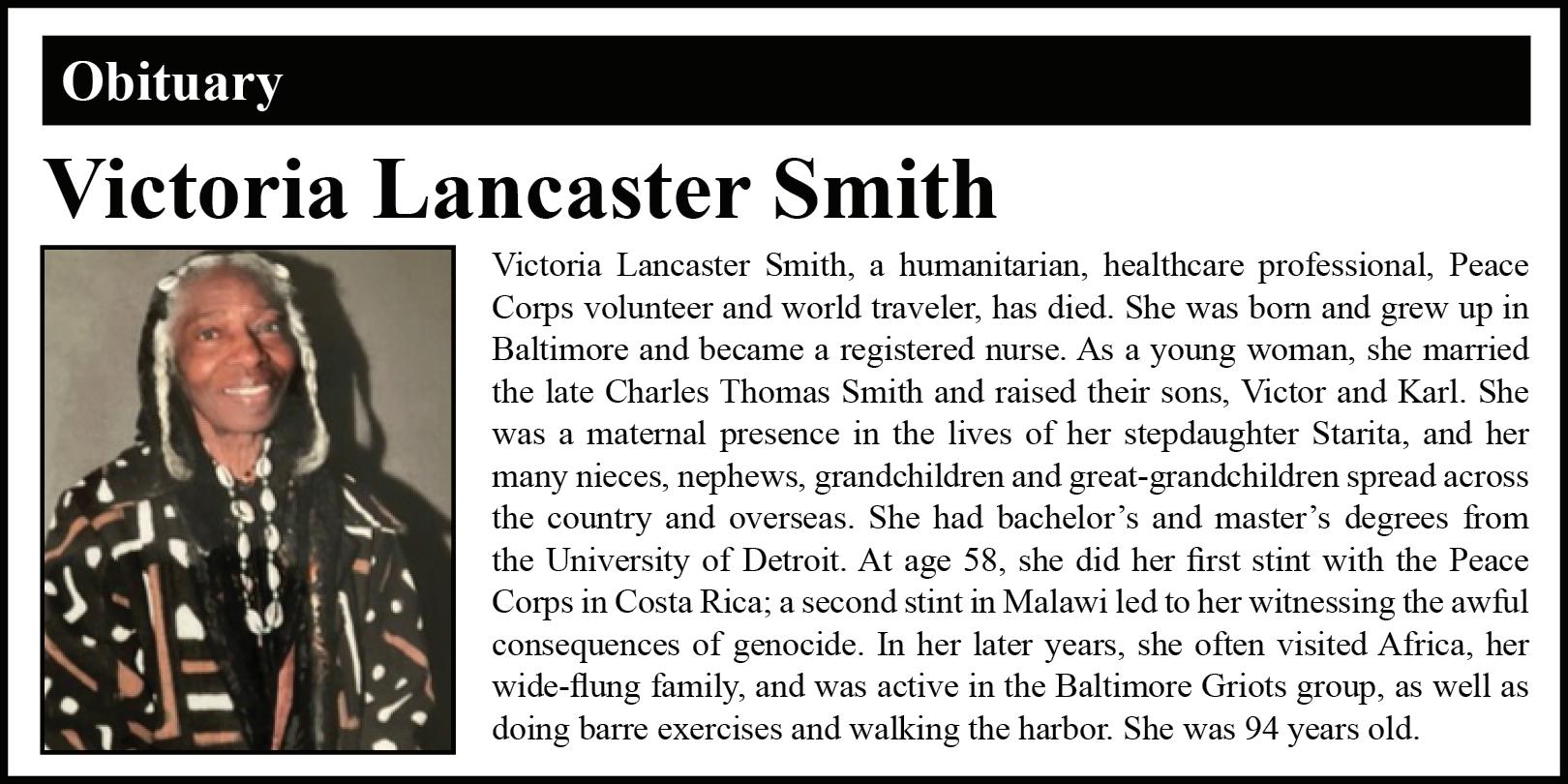
website touted a doctorate in urban educational leadership from Trident, misidentifying the degree, with no mention of Morgan State.
Trident, acquired by American InterContinental University in 2020, is a for-profit university that offers online degree programs.
The AP confirmed some of the other degrees and places of employment listed on Roberts’ resume, including his undergraduate degree from Coppin State University in 1998 and master’s degree from St. John’s University in 2000. Georgetown University did not respond to emails seeking comment about Roberts’ 2013 master’s degree.
His employment as a superintendent at Millcreek Township School District in Erie, Pennsylvania and as a network superintendent at St. Louis Public Schools. In Baltimore, Roberts served as a teacher at Forest Park High School and as principal of Friendship Academy of Science and Technology in Southeast Baltimore, which closed before the COVID-19 pandemic.
Aspire Public Schools, a charter school system in California, said it doesn’t comment on past or present personnel, but a federal grant application submitted by Aspire in 2019 named Roberts as chief schools officer. That information matches what is on his resume.
Read more on AFRO.com
The latest attack in Michigan joins a tragic list already far too long: Charleston, where nine faithful were massacred at Bible study; Buffalo, where Black families shopping for groceries were hunted; Tree of Life in Pittsburgh, where Jewish worshippers were gunned down.
Different locations, different victims, same deadly mix: hatred, division and easy access to weapons of war.
This is not random. It is part of a broader epidemic that has claimed too many lives and stolen too much peace. The sound of gunfire has become America’s background noise, shattering lives in classrooms, workplaces, nightclubs, neighborhoods—and now, again, a sacred gathering place. That reality should rattle every conscience, whether or not you believe in God.
Communities of color know this pain deeply. Black churches have long been bombed, burned and desecrated—from Birmingham to Charleston.
Jewish families in Pittsburgh, Asian Americans in California, LGBTQ+ communities in Orlando, children in Uvalde—the list keeps growing. Different targets, same message: hate will find a way if a nation lets it.
We cannot ignore what fuels this violence. America has tolerated a toxic mix of racial hatred, political extremism and a gun culture that borders on idolatry. Too often, voices in the public
Still, pointing to Washington is not enough. Laws matter, but leadership at every level matters too. In every community, faith institutions, schools and civic organizations must take safety seriously. Preparation is not paranoia—it is prudence. Ushers and greeters can be trained to be watchful as well as welcoming. Leaders must review and strengthen security protocols. Partnerships with neighbors and law enforcement should be built before—not after—tragedy strikes. At the same time, vigilance cannot give way to fear. If people of faith stop gathering, and if communities at large grow numb, then hate has already won. Our response must be steady and visible: to keep praying, keep teaching and keep showing up. Whether in a sanctuary, synagogue, mosque, temple, classroom or concert hall, the public square must not be surrendered.
So where do we go from here? We grieve, we demand accountability and we insist that laws value lives over lobbyists. We call out rhetoric that divides instead of unites, and we challenge leaders—and ourselves— to return to a discourse rooted in truth, respect and responsibility. Whatever happened to civil speech, to words that heal instead of harm?
Michigan is only the latest reminder that violence in sacred spaces is not someone else’s problem. It is America’s problem. And until America wakes up, sanctuaries will remain vulnerable. What cannot be lost in the noise is this: communities will not be silenced. People will keep gathering. They will keep building circles of trust, hope, and love. Because when violence desecrates sacred ground, all of us lose. And until we choose both humanity over hatred and civility over reckless words, none of us are truly safe.


By Tashi McQueen AFRO Staff Writer tmcqueen@afro.com
Morgan State University (MSU) honored seven former student-athletes as new Hall of Famers and recognized two history-making swimming teams with the Team of Distinction Award on Sept. 19 in Owings Mills, Md.
The 2025 Varsity ‘M’ Letterwinners Club Athletic Hall of Fame banquet drew hundreds as former student-athletes were celebrated for their achievements both in and outside of sport.
“The committee comes out with who we believe is worthy of being considered and then we also do the same thing with the teams of distinction,” said Ramona Riley-Bozier, chair of the Morgan State University Hall of Fame Committee.
Riley-Bozier explained that the committee is made up of former college athletes who vote for that year’s inductees. She said selections have been made annually–starting in January and concluding in April—since the COVID-19 pandemic, but they are in the process of transitioning back to every two years. The committee chooses from applicants and others who may fit the criteria.
The 2025 Hall of Fame class features Ivanti “Ivy” Bush-Lawrence (volleyball, 2006-09); Maurice Burton (football, 1976-79); Clarence Holzendorf (football, 1977-80); Alan Mitchell (track and field, 2003-06); Courtenay Servary (lacrosse, 1972-75); Esther Johnson Smith (volleyball, 2004-07) and James Turk (basketball, 1961-65), posthumously. The Swimming and Diving Championship Teams (195275) and the 1950 Men’s 4x400m Relay Team also received recognition.
Bush-Lawrence reflected on the student-athlete environment at MSU during her time there.
“Every day you work hard for each other, every day you give your best,” she said. “Those 5:30 a.m. times of going into the training room, the long nights and mornings have definitely shaped me. It has helped me be mentally strong, and bring that into the workplace everyday.”
One highlight of her career was a historic win against the University of Maryland, Baltimore County (UMBC) in 2006. In her first season, she helped the Lady Bears achieve their first-ever win over UMBC, securing a career-high 31 kills and 14 digs.
That year, she was named to the All-Mid-Eastern Athletic Conference
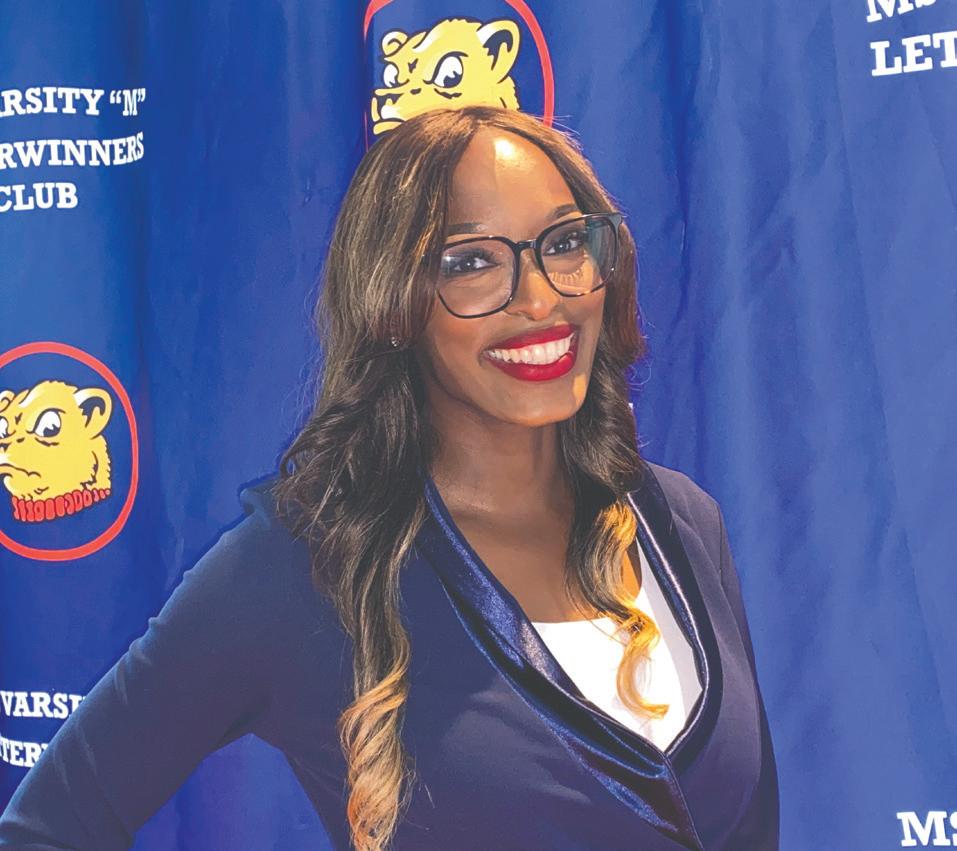
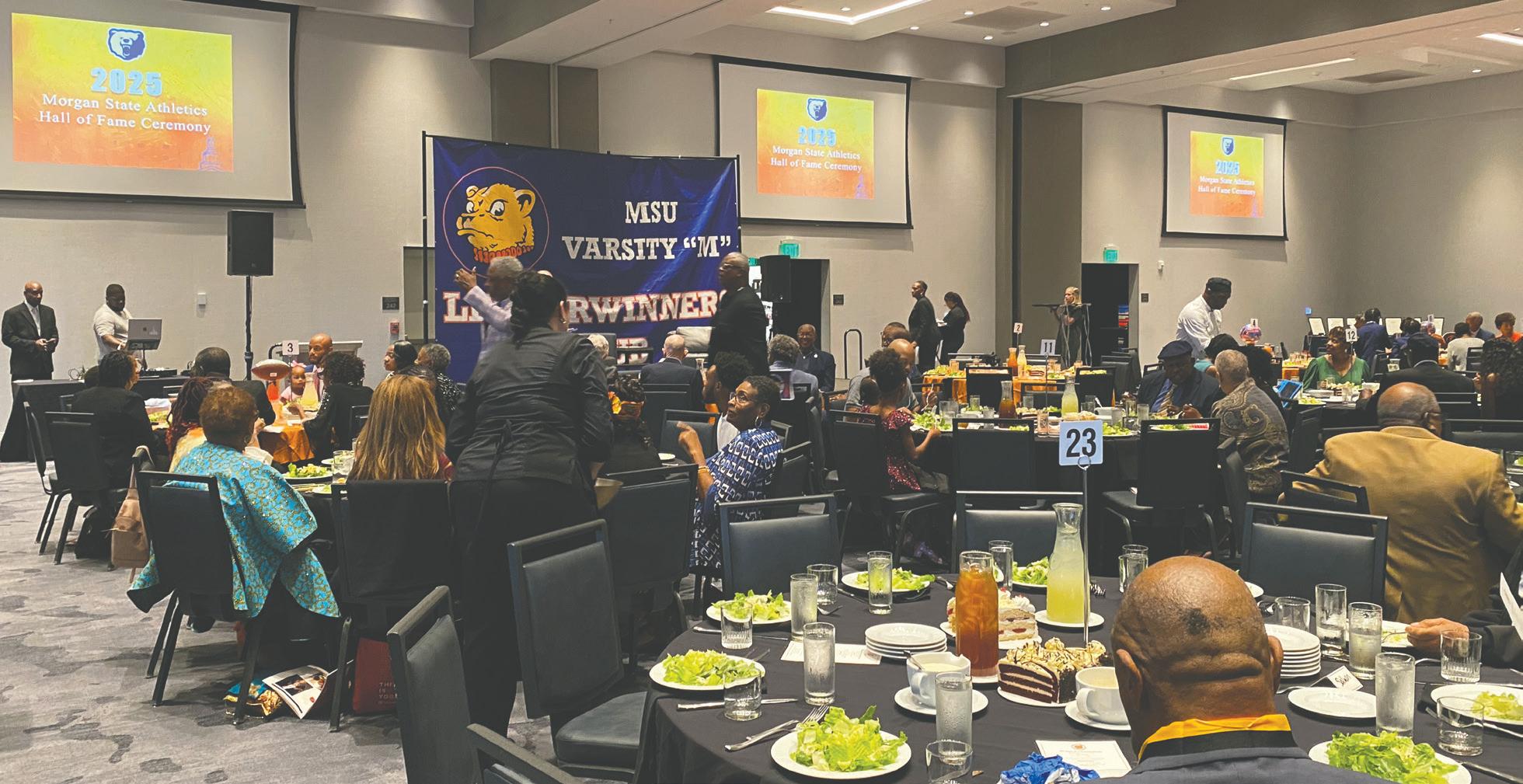
(MEAC) Second Team, the MEAC All-Tournament Team, earned the MEAC Rookie of the Year and Team MVP titles. Academically, she was named to the Morgan State All-Academic First Team and received the MEAC Commissioner’s All-Academic Award in 2008.
Bush-Lawrence acknowledged the significance of the accolades as a Black volleyball player from a historically Black college and university (HBCU).
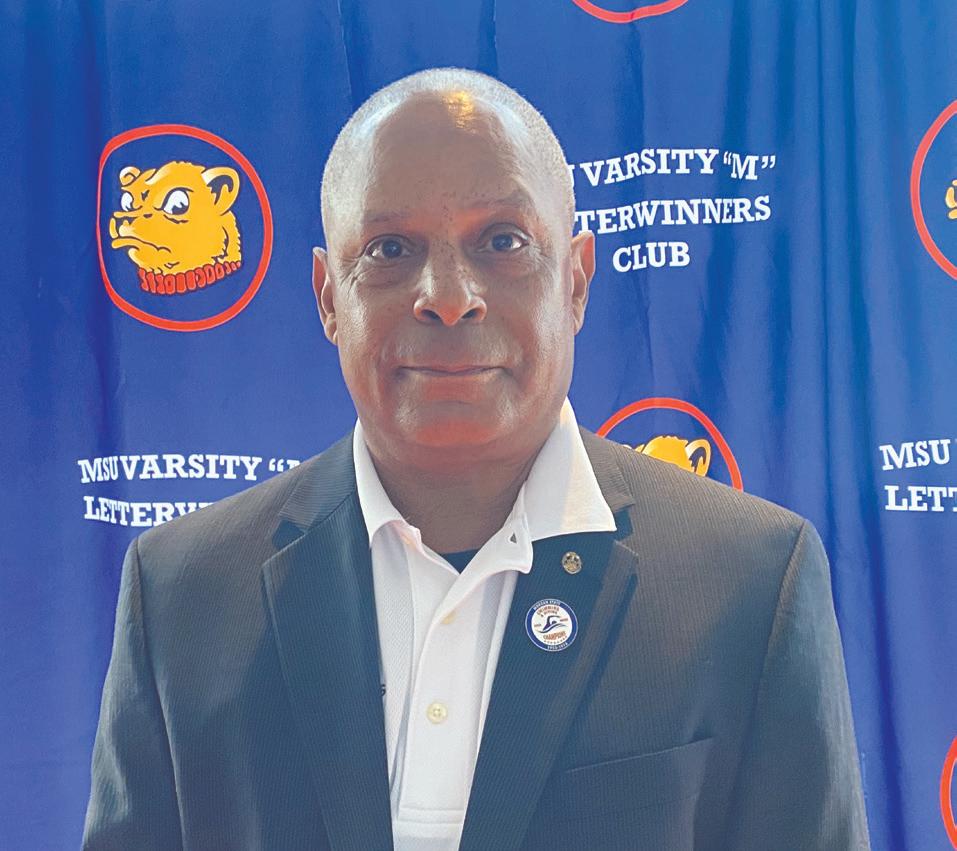
“Even within the game we are underrepresented,” she said.
According to the National Collegiate Athletic Association (NCAA), Black women accounted for 2,101 volleyball players during the 2023-24 season — far fewer than the 8,393 Black student-athletes in men’s basketball and 32,184 in football.
She hopes the recognition inspires the next generation.
“Even if you don’t see anyone that looks like you, keep going,” she said. “Make sure that you are always conducting yourself in a positive manner. You can do anything.”
Rodger Murphy Matthews, a former member of the swimming and diving championship team, expressed gratitude for the recognition but said it is overdue.
“Unfortunately, during the ‘70s, they had to depend on sports that made money,” he said. “Swimming doesn’t generate a great deal of revenue, like a basketball or football team.”
Even so, Matthews said the team received strong support from the MSU community.
“When I was at Morgan, even though we were not a large revenue-producing team, the stands at the swimming pool were generally full, which gave additional visibility for the entire campus,” he said. “It also
permeated when we went to the other schools to swim against them. So the crowds would follow.”
Matthews highlighted the value of teamwork.
“Even though swimming is an individual sport, you are still part of a team working towards a common goal,” he said.
Matthews said his coach, James F. Mack, would emphasize the importance of being in a team and doing whatever it took for it to succeed.
MSU’s competitive swim teams kicked off in 1952, with 14 men. Two years later, the team would achieve an undefeated season. In 1955, they won their first Central Intercollegiate Athletic Association (CIAA) Championship. In their 1968-69 season, they clinched another CIAA Championship, which kicked off a six-year reign which included six consecutive conference titles and the inaugural MEAC Championship in 1972. They continued their dominant streak until MSU made the decision to discontinue the teams in 1975.
Matthews provided advice for current MSU student-athletes.
“The key for being a college athlete is to set your goals,” said Matthews. “Set the goals, work hard and you can get there, wherever it is you’re trying to go.”
By Edward G. Robinson III AFRO Sports Editor
Can the Baltimore Ravens fix this mess?
Yes. Maybe?
No, of course, they can. But will they? And how? And how soon?
Yikes.
Making the NFL playoffs, winning Super Bowl LX, non-negotiable goals set at the start of the season, are still visible, even achievable, goals. Yet, can this team, now playing sloppy mistake-filled football, remain poised, make corrections, heal new injuries, mend old injuries and find a winning formula?
“There’s a lot of football to be played,” said Baltimore coach John Harbaugh during a postgame press conference following his team’s 37-20 loss to the Kansas City Chiefs on Sept. 28 at GEHA Field at Arrowhead Stadium. “There’s a division to be won. We have to find out how to become good enough to win it.” The Ravens dropped to 1-3 overall for the first time since 2015. Next up, the Houston Texans (1-3) on Oct. 5.
“We just have to go back to the drawing board,” said running back Derek Henry, who

linebacker Roquan Smith, cornerback Marlon Humphrey and cornerback Nate Wiggins, who all left the matchup against the Chiefs with various bumps and bruises.
All of these injuries create probing questions for the Ravens, whose depleted defense must have retired Ravens defenders – say Ray Lewis, or Ed Reed – driving toward the team’s practice facility in Owings Mills in their shoulder pads and helmets.
Baltimore needs a better defensive plan. Harbaugh says one is on the way. Believe it or not, this is the landscape they are faced with as AFC North opponents prepare for winter.
Opponents have scored 133 points and amassed 1,649 offensive yards against the Ravens’ defense this season.
Mahomes dropped a beautiful deep ball into the outstretched hands of Worthy, who started the rout with an inside fake and sprinted by Humphrey late in the first quarter.
Then Worthy cut loose on an end-around and burned the Ravens’ defense for 35 yards, leading off a second quarter touchdown drive.
“We have to get it fixed,” Baltimore safety Kyle Hamilton said. “We have to put a product on the field that fans can say they are proud to root for.”
It’s hard to root for Jackson, the face of the franchise, when he’s pancaked on the ground, defensive linemen wrestling him down through highway gaps.
Protect the money. Jackson is the money.
penalties.
His concerns about the team must start with candid reassessment away from outside noise. It’s time to ask “Alexa” to turn on some rain sounds and sit with this problem into the wee hours. The Ravens have become a bit offensively predictable and the coaches now have to stay up late and fashion strategy that matches the available personnel and find what Harbaugh called a “rhythm.”
“I’m concerned but I’m not overwhelmed by it,” he said.
“The three losses are against three of the top teams in the league. That’s for sure. … It doesn’t really matter. We have to win the next game. And then once you win the next game, you have a chance to stack some wins.”
the Chiefs held to 42 yards on eight carries. He held on to the ball after two fumbles in earlier games. Still, there’s more to fix than turnovers and now, after a disappointing showing against the Chiefs, a rash of injuries threaten the timetable. Threaten a downtown parade. Lumped on top of a miserable loss was an injury to starting quarterback Lamar Jackson, who left the game in the third quarter with a reported quadriceps injury.
He appeared to injure himself on a QB keeper, tackled from behind by a Chiefs defender. There’s no immediate date scheduled for his return.
The M*A*S*H unit Ravens are down several more players after entering Week 4 with a long list of players on the injury list: Travis Jones (knee), Nnamdi Madubuike (neck), Patrick Ricard (calf), Ronnie Stanley (ankle), Kyle Van Noy (hamstring) and Broderick Washington (ankle). Now add Jackson,
The Chiefs limped into this game but found sure footing as quarterback Patrick Mahomes zipped passes to his offensive targets. The Chiefs produced 382 yards of offense.
Mahomes connected with his favorite target Travis Kelce and wide receiver Xavier Worthy, a second-year speedster who pulled in five catches for 83 yards.
In the first quarter, on second-and-8 from the 18,
Harbaugh is not one for excuses. He’s seen just about everything in his 18 seasons. If this is a new challenge, it sure doesn’t seem to scare him.
He hasn’t pushed the panic button. He appears sanguine in his self-analysis and continues to accept blame, specifically where the Ravens were ill-prepared against the Chiefs. He’s acknowledged that he and his staff bungled a few calls and mismanaged some game-clock scenarios drawing delay of game
If Harbaugh is looking for a place to start, here’s a thought: Give the ball to Henry. Then give it to him again. Then again. Keep it simple.
“We’ll have to go back to work and try to figure out how we win our next football game,” Harbaugh said. “We’ve got issues that we’re dealing with and we have to figure out how to deal with them in a real smart way.”
…And fix this mess.

By Dr. Teresa M. Jeter
Every October, we celebrate National Community Planning Month, a recognition established by the American Planning Association (APA) to highlight the vital role urban and regional planners play in shaping our communities. While often behind the scenes, planners help communities navigate change, protect culture and build resilience.
For African American neighborhoods, planning is not just technical—it is historical and deeply personal. Too many of our communities still bear the scars of urban renewal, disinvestment and displacement. Vacant lots, aging infrastructure and rising rents reflect decisions made without us in the room. But
planning also offers tools for healing, restoration and transformation. I know this firsthand. Early in my career, I partnered with a board of pastors who wanted to fill vacant lots in their neighborhood with housing. These were men of faith, not real estate developers. The president of the board, then in his 80s, greeted me with a line I’ll never forget: “Keep us out of jail!” His humor carried truth—they wanted to build, but they lacked the technical expertise. Together, we created a plan that turned abandoned land into housing, proving what happens when lived experience and professional guidance unite. That project taught me what planning truly is: a bridge between expertise and community. It is not simply about maps
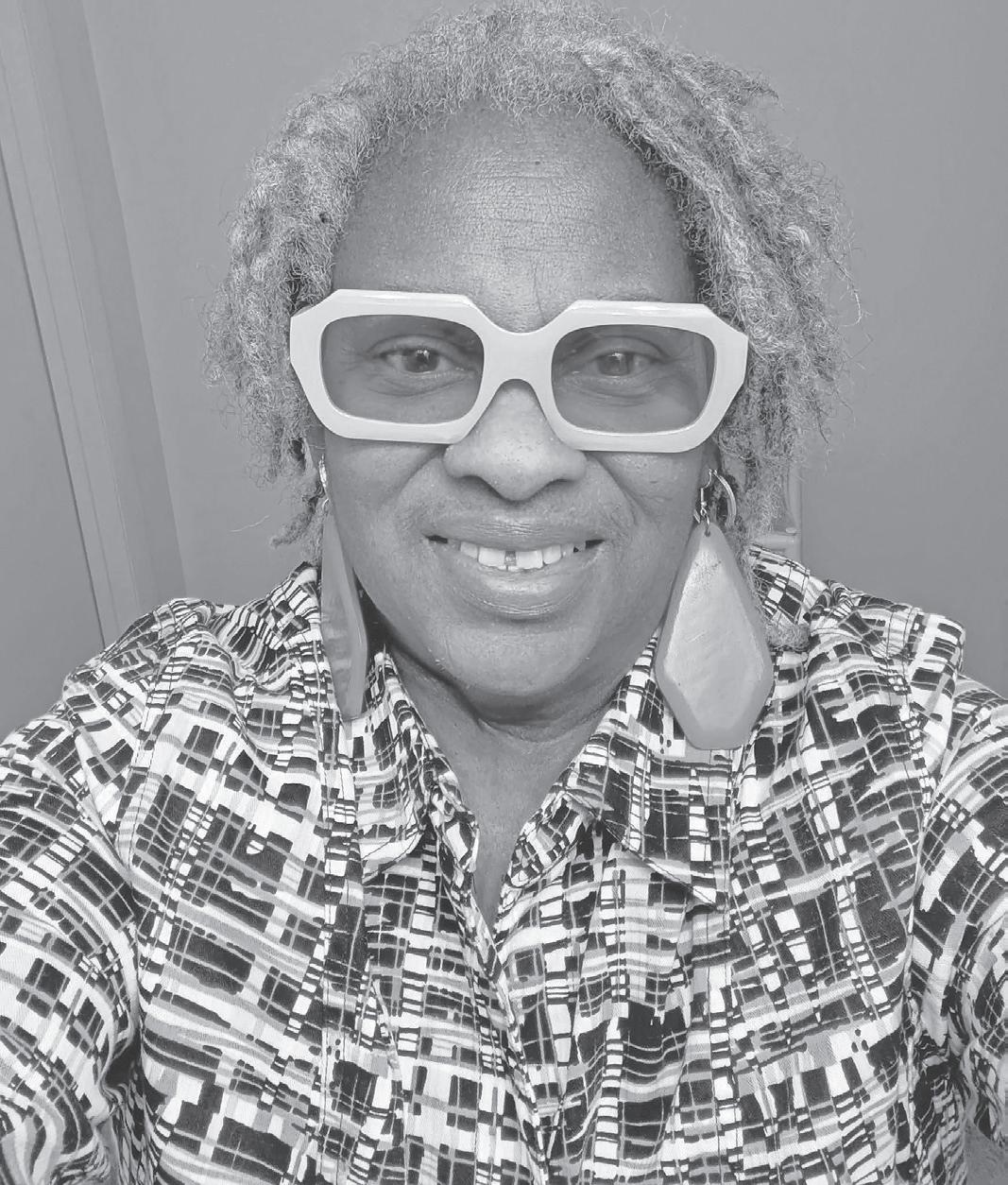
and zoning codes, but about amplifying voices too often ignored. It is about helping pastors, parents and local leaders turn dreams into blueprints and blueprints into reality. Today, this work is more urgent than ever. Climate change threatens our most vulnerable neighborhoods with flooding, heat and poor air quality. Housing affordability is at crisis levels, and Black communities are disproportionately displaced by gentrification. But planning— done equitably—can counter these forces. It can expand affordable housing, preserve cultural heritage and create resilient neighborhoods where children can thrive.
That is why National Community Planning Month is not just a recognition—it is a call to action. We need more
African-American voices in planning rooms, on zoning boards, and in neighborhood associations. Our faith leaders, who already anchor our communities, can partner with planners to reimagine land for housing, green space or cultural centers. Young people, who bring energy and innovation, can consider careers in planning where they can carry the torch of justice forward.
The truth is this: planners cannot do this work alone. Communities thrive when residents are not just consulted but empowered. My experience with that board of pastors showed me the transformative power of collaboration.
As we celebrate this October, let us honor the planners who dedicate themselves to creating healthier, safer and more equitable communities.

And let us honor the community leaders—like those pastors—who dared to believe in a different future. Together, they remind us that when we
plan with purpose, we build with hope. And when we build with hope, we create communities where everyone belongs.
When we talk about prison systems, the conversation often turns to correctional officers, administrators and budgets. But what remains invisible—and too often unacknowledged—are the caregivers who actually keep prisons functioning: the incarcerated themselves.
My son, Byron, is serving time in Maryland. Like so many others, he has become a lifeline to those around him. Recently, he was tasked with caring for a fellow incarcerated man who could not care for himself. Byron lifted him to the toilet, made sure he ate, wheeled him to the infirmary for his medication and ensured he had the dignity of being seen as human. None of this was provided by staff. It was one incarcerated man caring for
another.
And this is not an isolated incident. Inside, men and women mentor each other, give legal advice, share food and commissary funds and lift each other’s spirits when despair creeps in. They carry one another through grief, through sickness and through unbearable conditions like excessive lockdowns and extreme heat.
This quiet network of care is not in any Department of Corrections report. It does not get funding. It is not measured in annual reviews. But without it, the prison system would collapse under the weight of its own neglect.
If society is willing to admit this truth, then the question must follow: Why do we continue to dehumanize those who are already carrying one another in the
hardest of places? Why do we ignore the fact that incarcerated people are functioning as nurses, chaplains, social workers and brothers without recognition, support or protection? Instead of acknowledging this humanity, incarcerated men and women like my son are stuck in a constant cycle of lockdowns and are left to suffer the effects of sweltering heat in prisons without ventilation and air conditioning.
If we acknowledge that incarcerated people are already functioning as caregivers, then we must take the next step: put policies in place that recognize, support and protect this hidden labor. States like Maryland should create peer caregiver training and certification programs, mandate real healthcare staffing and require transparency about
By Steven Kappen
How do strong, tight-knit neighborhoods turn into streets full of vacant homes and empty lots? The answer may look complicated but at its core, it happens family by family, house by house. Big decisions made at the state or city level trickle down and eventually force people out of their homes.
At Maryland Volunteer Lawyers Service (MVLS), I run a project focused on keeping family homes in family hands. Recently, we started digging deeper into the personal stories behind home loss – stories tied to issues like tax sales, foreclosures and the long-lasting impact of redlining. We wanted to understand how these larger forces – things like disinvestment or discriminatory housing policies – play out at the ground level, on a single block in a single neighborhood. What happens when neighbors are pushed out, one after another, until an entire community begins to unravel?
Baltimore is a city of neighborhoods where each block tells its own story. To get a clearer picture, we studied the 500 block of N. Carrollton Ave. in West Baltimore. Using public data, we tracked every deed recorded there over the past 50

and its resilience.
Harlem Park is a place of iconic rowhomes and rich history. It has been deeply scarred by redlining, racial covenants, urban renewal and even the Highway to Nowhere. But the area has also been home to thriving Black communities, cultural landmarks and people who shaped the city in powerful ways.
Our block-level research showed how citywide policies play out on the ground, hollowing out neighborhoods piece by piece. In 1985, 81 percent of the homes in that block were owned by individual families. By 2025, that number had dropped to 52 percent. Why does this matter?
Because individual ownership usually means long-term residents who build community, while corporate or LLC ownership often points to rentals, speculation or vacant properties.
who is actually providing care inside. Until we face this truth, we will continue to exploit compassion without accountability.
This is the statement that I send to lawmakers: I urge you to consider legislation, such as a Prison Care Standards Act for Maryland, that would mandate adequate healthcare staffing, recognize and support peer caregivers and require transparency about how care is actually being provided inside our state prisons. My son is living proof that even behind bars, love and compassion survive. It is time for policymakers to act, because the humanity of our loved ones behind bars depends on it. It is time that our prisons actually serve as a place of authentic rehabilitation, not constant punishment and harsh conditions.
the loss of stable, lived-in neighborhoods. For example, when we looked at seven lots that were demolished, four of them had passed through city ownership at some point.
This work wouldn’t have been possible without the support of partners like Fight Blight Bmore, the SOS Fund and Parity Homes. Moving forward, we want to go even deeper – telling the personal stories of the families and homes behind the data and expanding our research to show how policies directly shape lives.
years. We looked at who bought the homes – private owners or corporations – and whether those transfers were voluntary or forced, such as
through tax sales or foreclosures. We then zoomed out and focused on Harlem Park, a neighborhood that reflects both Baltimore’s challenges
We also found that 39 percent of homes in the area changed hands over the 50-year period because of property tax sales. For those unfamiliar, a tax sale happens when the city auctions off unpaid property tax debt to collect revenue. It’s one of the biggest forces pushing longtime residents out of their homes today.
We were struck by how often this happened – proof that the city itself plays a major role in speeding up
At MVLS, our mission is to change the tide of justice. We help low-income clients protect their homes, plan their estates and build intergenerational wealth – work that stitches communities back together instead of pulling them apart. Through the dedication of pro bono attorneys, we connect neighbors with the legal support they need to stay rooted in their communities. If you or someone you know needs help, call our intake line at 410-547-6537, Monday through Thursday, 9 a.m. to 12 p.m. Together, we can help families hold onto their home homes, and block by block, preserve the strength of Baltimore’s neighborhoods.

SUPERIOR COURT OF THE DISTRICT OF COLUMBIA PROBATE DIVISION 2025FEP000114 FEBRUARY 15, 2020 Date of Death GLORIA VIVIAN ANDERSON Name of Decedent
NOTICE OF APPOINTMENT OF FOREIGN PERSONAL REPRESENTATIVE AND NOTICE TO CREDITORS

D.C. 20001, on or before MARCH 26, 2026. Claims against the decedent shall be presented to the undersigned with a copy to the Register of Wills or filed with the Register of Wills with a copy to the undersigned, on or before MARCH 26, 2026 or be forever barred. Persons believed to be heirs or legatees of the decedent who do not receive a copy of this notice by mail within 25 days of its publication shall so inform the Register of Wills, including name, address and relationship. Date of first publication: SEPTEMBER 26, 2025 Name of newspaper and/or periodical: Daily Washington Law Reporter AFRO American Newspapers
JAMES I.KING JR. PIA P.KING Personal Representative TRUE TEST COPY REGISTER OF WILLS 09/26, 10/03, 10/10/25
KEVIN BARBOUR whose address is 9908 GRANDHAVEN AVENUE, UPPER MARLBORO, MD 20772 was appointed representative of the estate of GLORIA VIVIAN ANDERSON deceased, by the ORPHANS Court for PRINCE GEORGE’S County, State of MARYLAND, on JULY 28, 2020. Service of process may be made upon CHRISTINA TAYLOR, ESQ. 15 SHERMAN CIRCLE, NW, WASHINGTON, DC 20001 whose designation as District of Columbia agent has been filed with the Register of Wills, D.C. The decedent owned the following District of Columbia real property: 515 COLUMBIA ROAD, WASHINGTON, DC 20011 Claims against the decedent may be presented to the undersigned and filed with the Register
SUPERIOR COURT OF THE DISTRICT OF COLUMBIA PROBATE DIVISION ADMINISTRATION NO. 2025ADM000888 PATTIE L HILL AKA PATTIE HILL Name of Decedent Notice of Appointment, Notice to Creditors and Notice to
and relationship. Date of first publication: OCTOBER 03, 2025 Name of newspaper and/or periodical: Daily Washington Law Reporter AFRO American Newspapers
DWAYNE C ROWE Personal Representative TRUE TEST COPY REGISTER OF WILLS 10/03, 10/10, 10/17/25
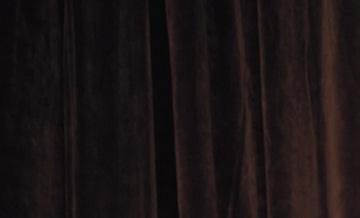
























Payment Policy for legal notice advertisements.
Effective immediately, The Afro American Newspapers will require prepayment for publication of all
accepted in the form of checks, credit card or money order. Any returned
result in the suspension of any
LEGAL NOTICES
ANNE ARUNDEL COUNTY, MARYLAND
Annapolis, Maryland ANNOUNCEMENT REQUEST FOR BIDS
On or after September 22, 2025, Plans and Specifications may be obtained from the Anne ArundelCounty Web Page at the following address: https://www.aacounty.org/departments/central-services/purchasing/P.O.R.T./bids/index.html . Bids will be received until time/date shown below, please submit your bid electronically via the PORT. Bids received after the date and time set will be rejected.
Due by 1:30 p.m. Local Time, Tuesday, November 4, 2025
Project: P567102 – Millersville Park Site Development Sonication No.: CAP26000072
Contact: Emma Pfefferkorn – 443-805-1737 CITY OF BALTIMORE DEPARTMENT OF PUBLIC WORKS OFFICE OF ENGINEERING AND CONSTRUCTION NOTICE OF LETTING
Sealed Bids or Proposals, in duplicate addressed to the Board of Esti-
mates of the Mayor and City Council of Baltimore and marked for WATER CONTRACT NO. 1413RR-Lake Montebello and Montebello Washwater Lake Dredging will be received at the Office of the Comptroller, Room 204 City Hall, Baltimore, Maryland until 11:00 A.M on November 5, 2025. Positively no bids will be received after 11:00 A.M. Bids will be publicly opened by the Board of Estimates and can be watched live on CharmTV’s cable channel 25/1085HD; charmtvbaltimore.com/watch-live or listen in at (443) 984-1696 (ACCESS CODE: 0842939) from City Hall at Noon.
The Contract Documents may be examined, without charge, at Contract Administration 4 South Frederick Street Baltimore, Maryland 21202 on the 3rd floor (410) 396-4041 as of October 3, 2025 and copies may be purchased for a non-refundable cost of 150.00 Conditions and requirements of the Bid are found in the bid package. All contractors bidding on this Contract must first be prequalified by the City of Baltimore Contractors Qualification Committee. Interested parties should call (410) 3966883 or contact OBC at 4 S Frederick St., 4th Floor, Baltimore, MD 21202. If a bid is submitted by a joint venture (“JV”), then in that event, the document that established the JV shall be submitted with the bid for verification purposes. The Prequalification Category required for bidding on this project is G90013 Dredging. Cost Qualification Range for this work shall be $20,000,000.01 to $30,000,000.00.
A “Pre-Bidding Information” session will be conducted virtually on Microsoft Terms on Thursday, October 9, 2025 at 10:00 am. Vendor can access Microsoft Teams virtual meeting as follows: Meeting ID: 225 072 988 046 6 Passcode: jh3so9Ek or Vendor can call: 1 667-4012804 Phone Conference ID: 479217933# or 479217933#.
A site visit to Lake Montebello and Montebello Washwater Lake will be conducted on Friday, October 10, 2025 at 10:00 am. For any Prebid questions, please contact Mr. Farid Sikander at farid.sikander@ baltimorecity.gov. Contractor questions shall be submitted (in writing only) by October 24, 2025 by 4:30 pm.
To purchase a bid book, please make an electronic request at: https://publicworks.baltimorecity.gov/dpw-construction-projects-notice-letting and dpwbidopportunities@baltimorecity.gov.
For further inquiries about purchasing bid documents, please schedule an appointment by emailing the assigned Contract Administrator Doreen.Diamond@baltimorecity.gov
Principal items of work for this contract include, but are not limited to: Mobilization and furnishing of all labor, material, equipment, and incidentals necessary for the removal of alum sludge and filter backwash solids from Lake Montebello and the Washwater Lake and final disposal of the sludge and filter backwash solids in an approved disposal site. The solids will need to be removed from the lakes, dewatered on site to reduce the amount of water to be hauled and disposed of, and trucked to a final disposal site. After the work is completed, site restoration of all disturbed areas will be performed.
The MBE goal is 15% The WBE goal is 8%
The MBE/WBE Goals of MBE-30% and WBE-15% will apply ONLY to the following Prequalification Codes: A02210-Grading, D02240-Erosion Control, D02710-Fencing & Guard Rail, D02800-Landscaping/Site Preparation, F02200-Earthwork & Site Preparation, G90027-Highway Signing & Lighting, G90027-Clearing & Grubbing, G90054-Hauling (non-hazardous materials), G90061-Tree Removal & Pruning.
APPROVED: APPROVED
Clerk, Board of Estimates Director Matthew W Garbark





